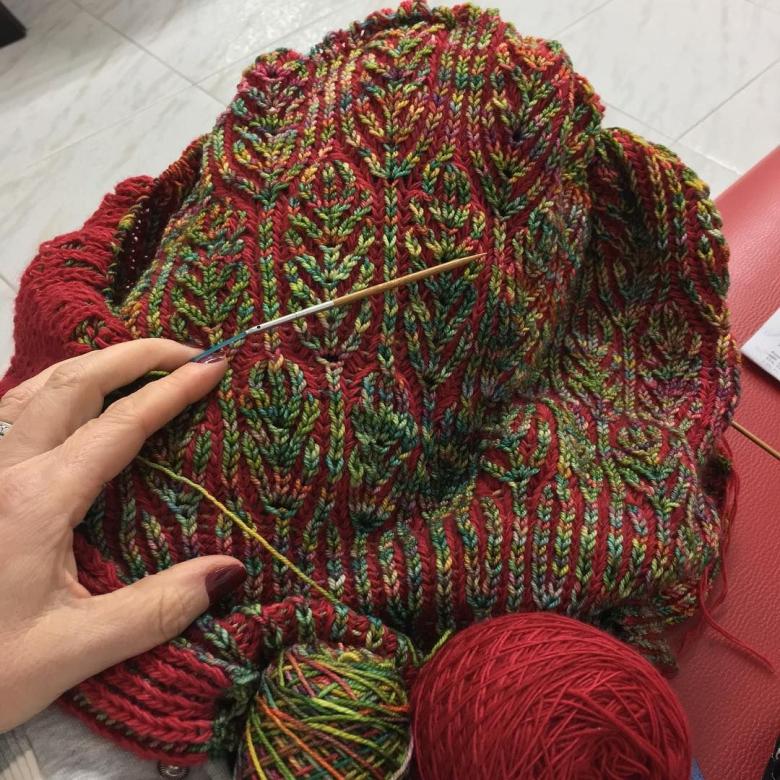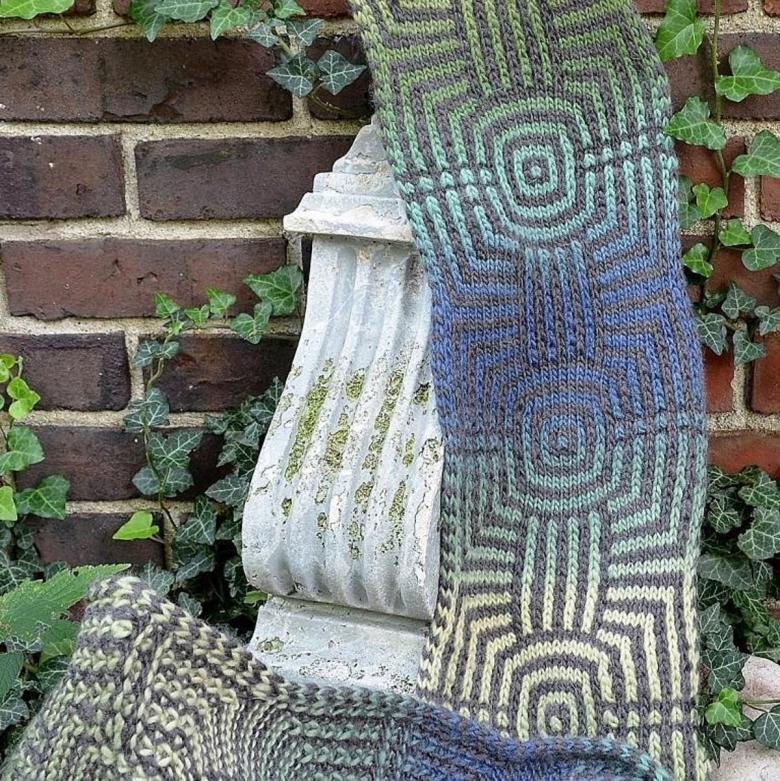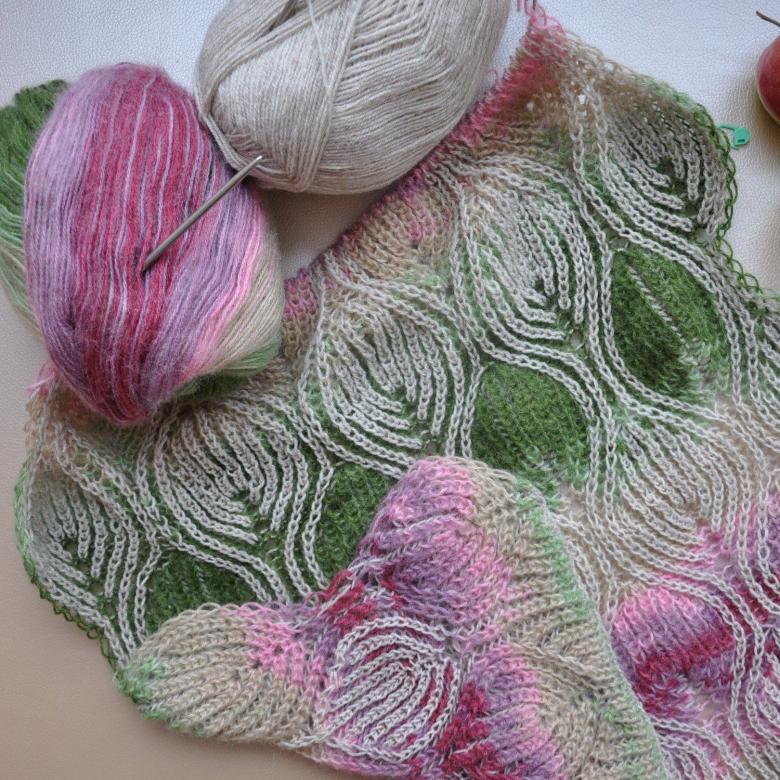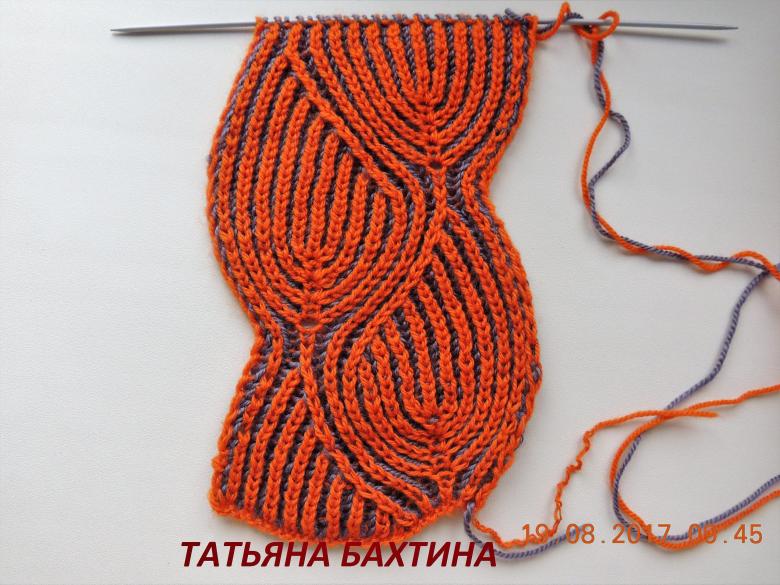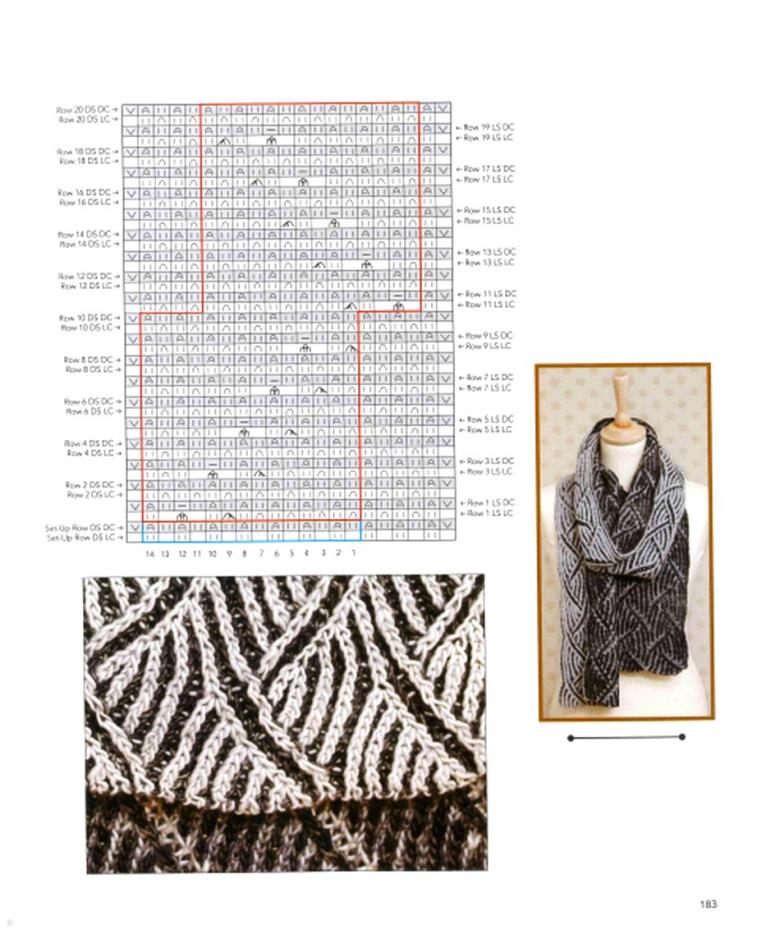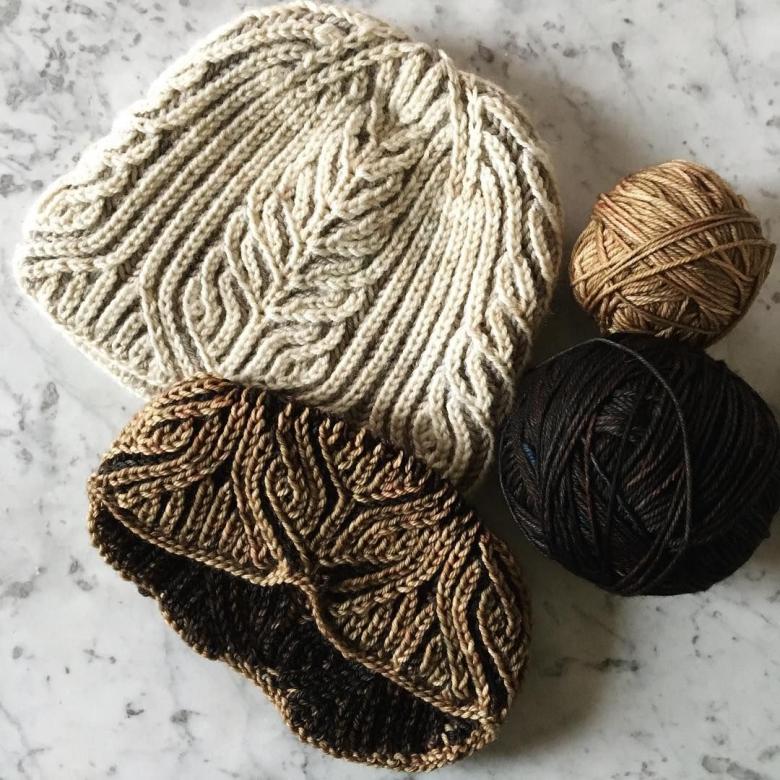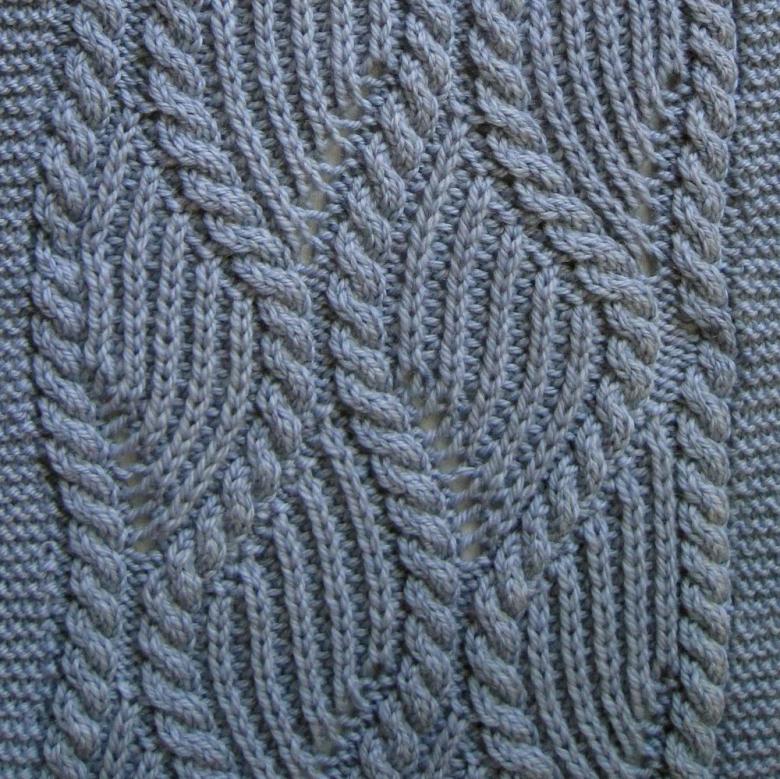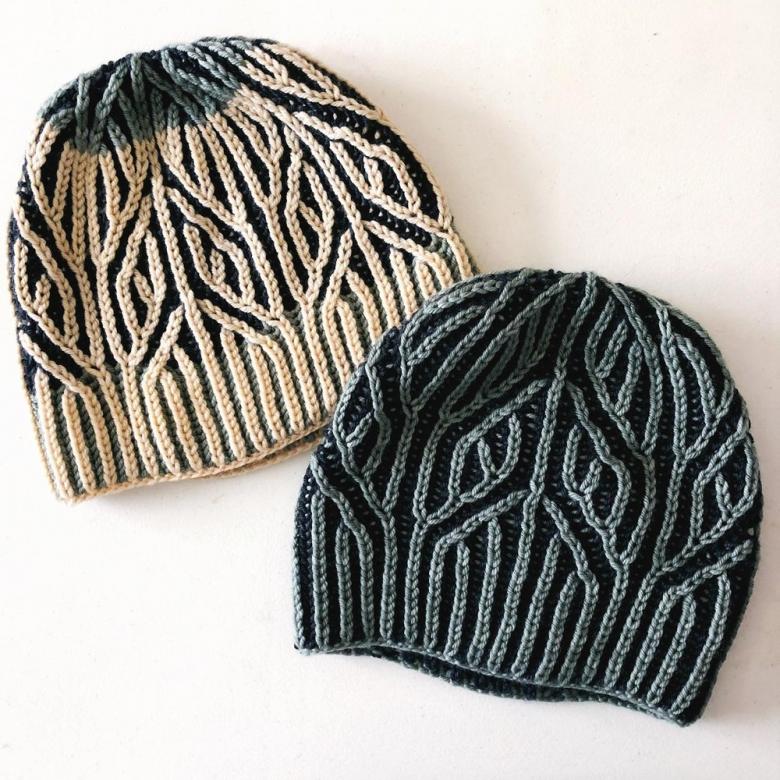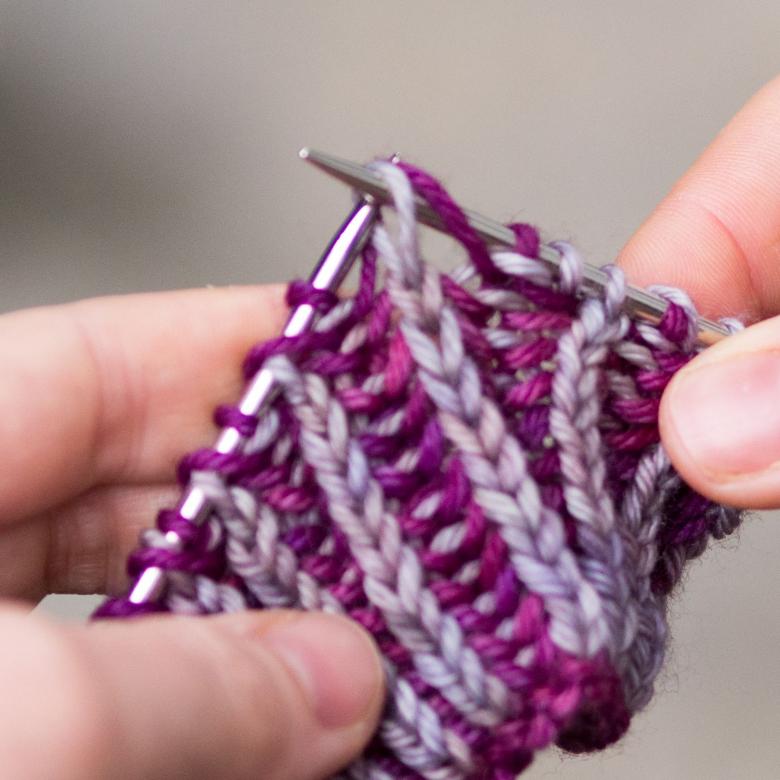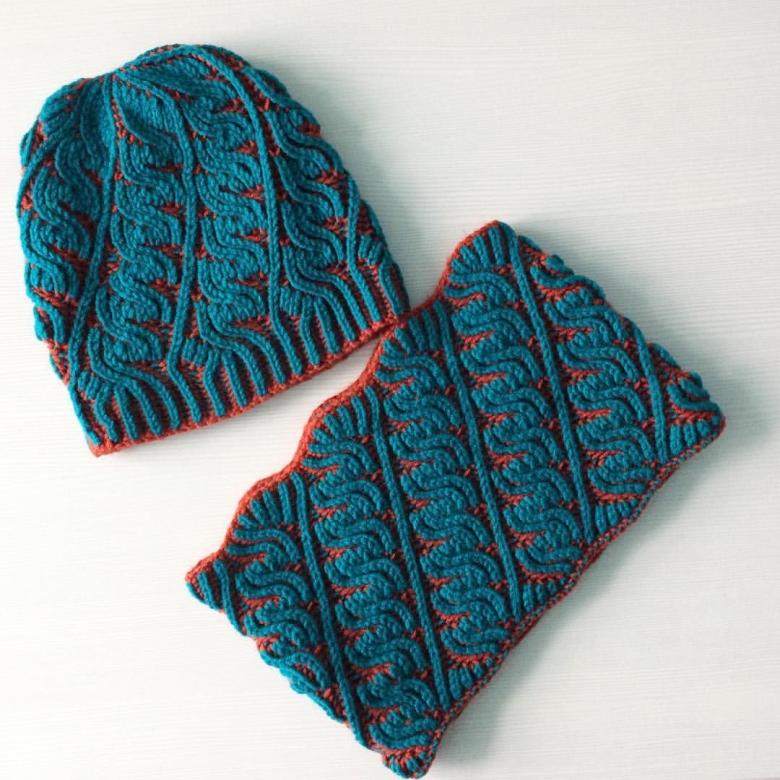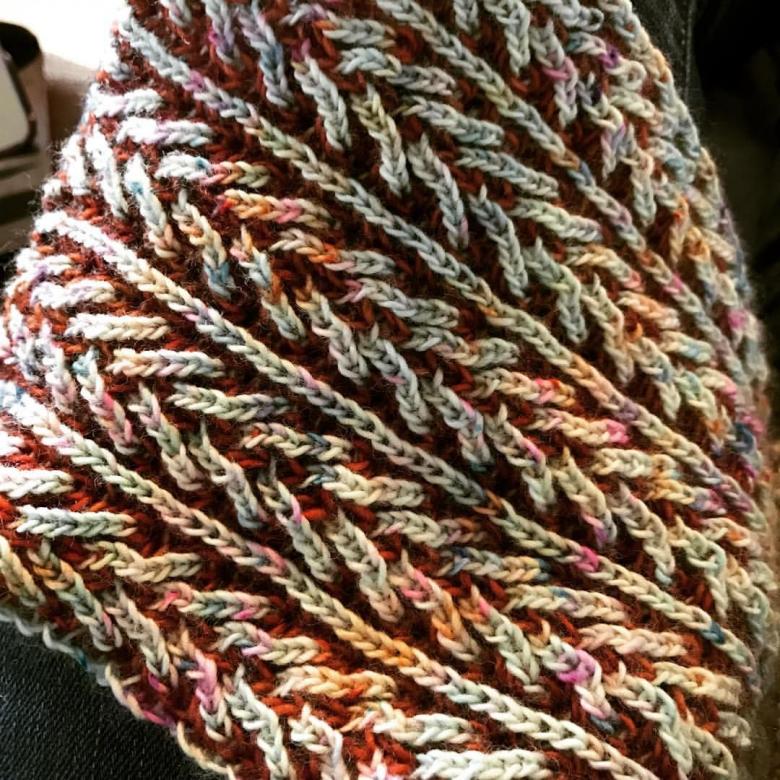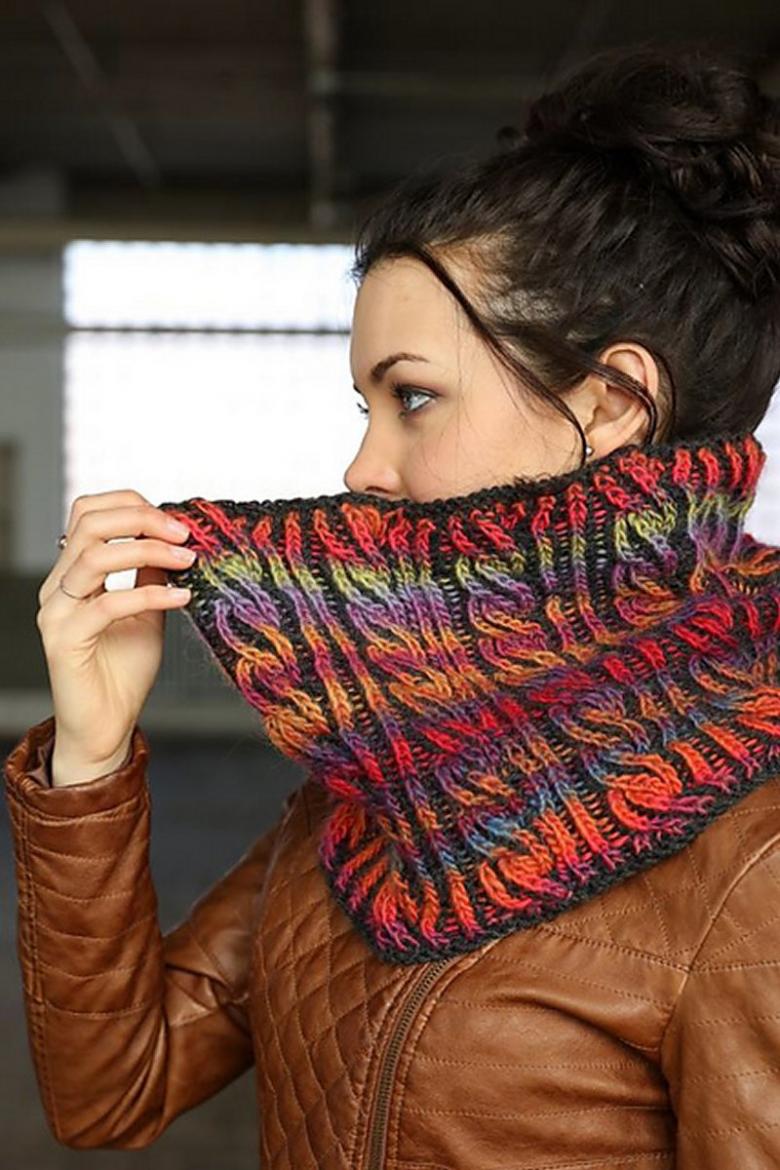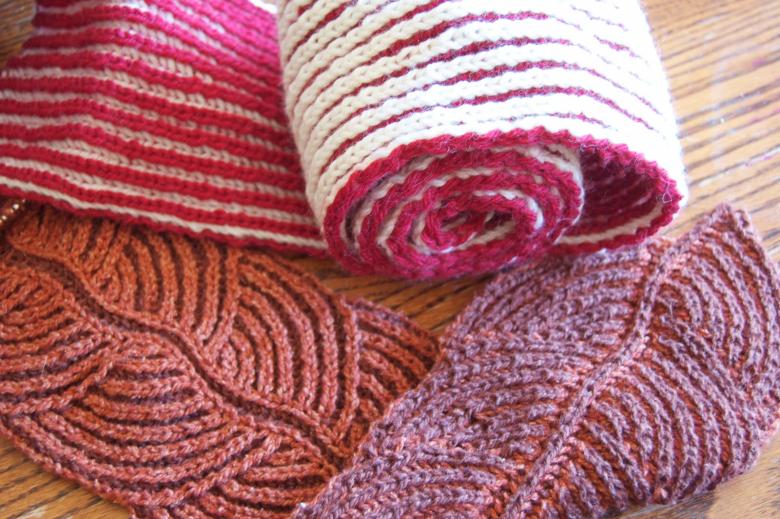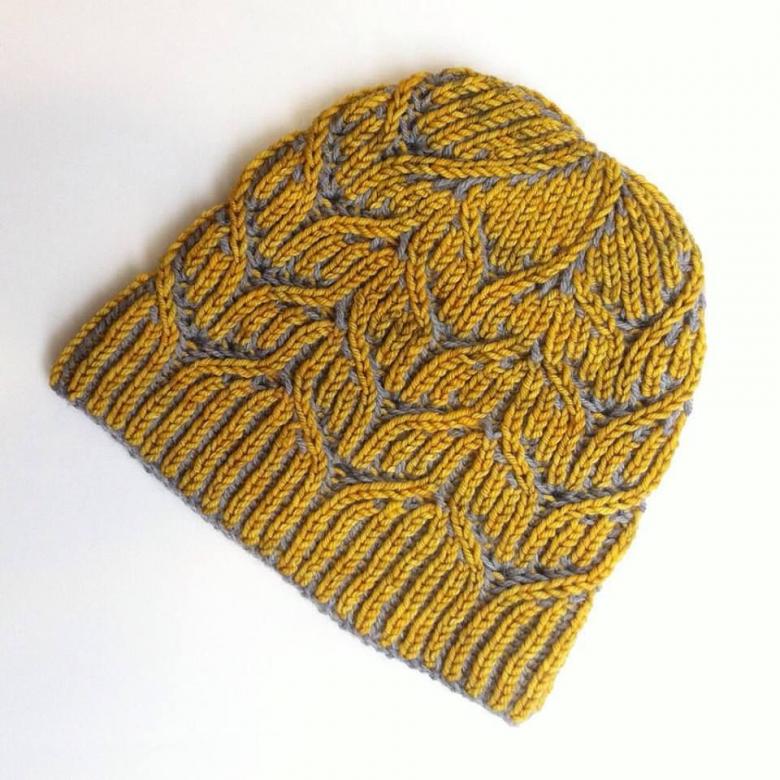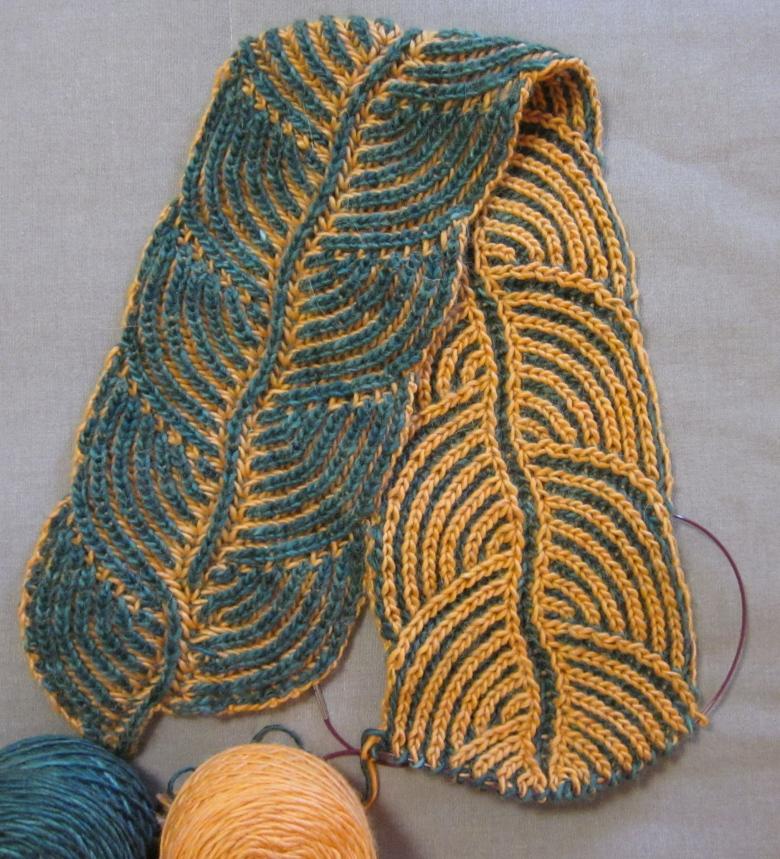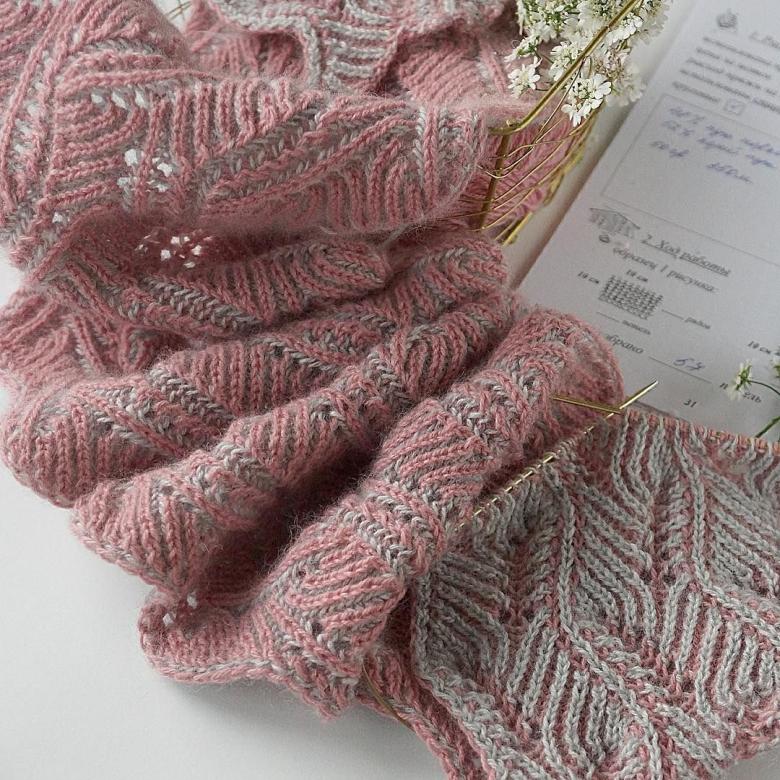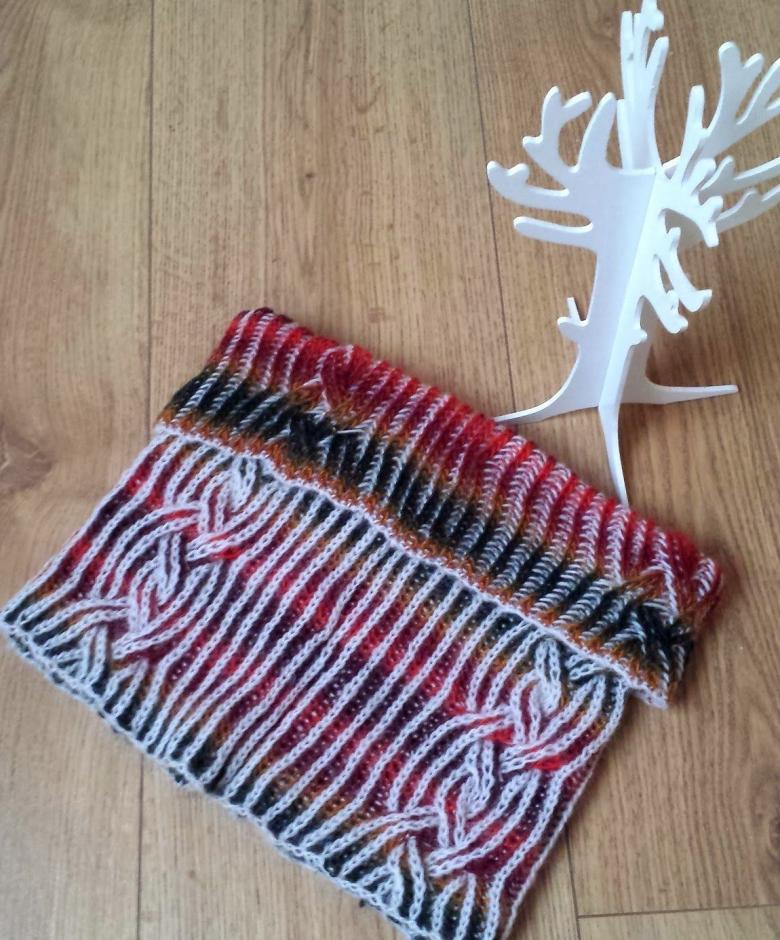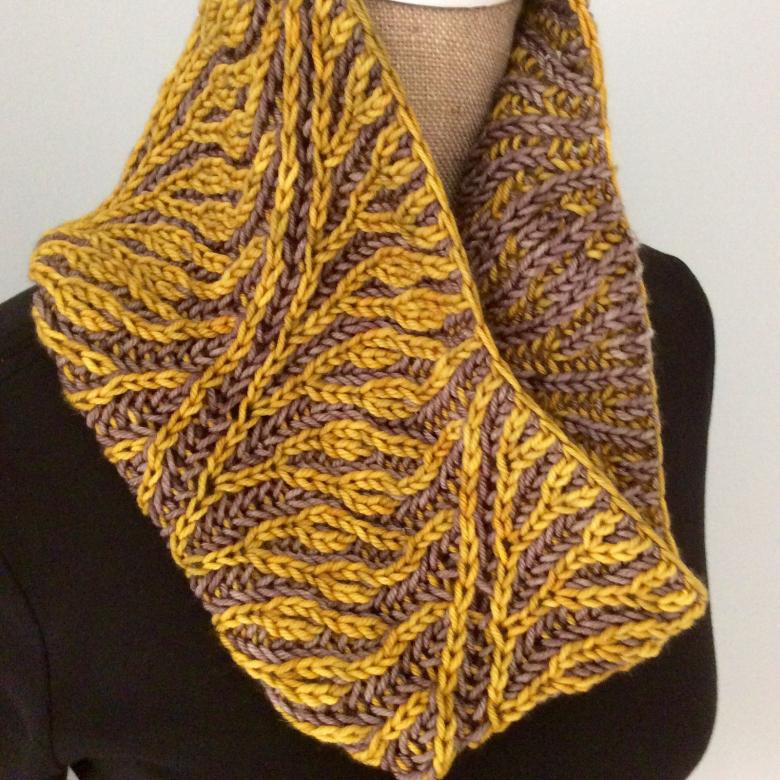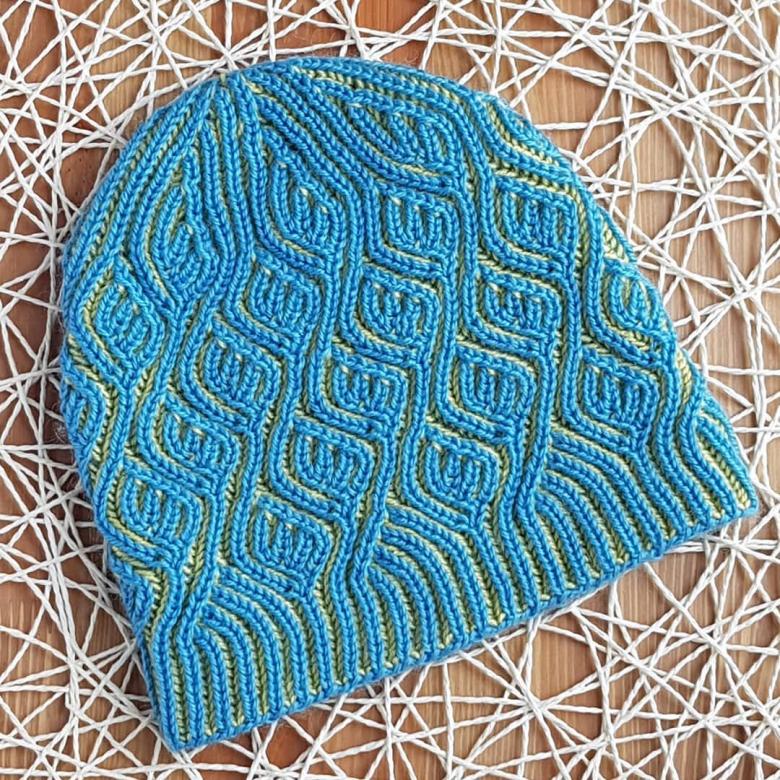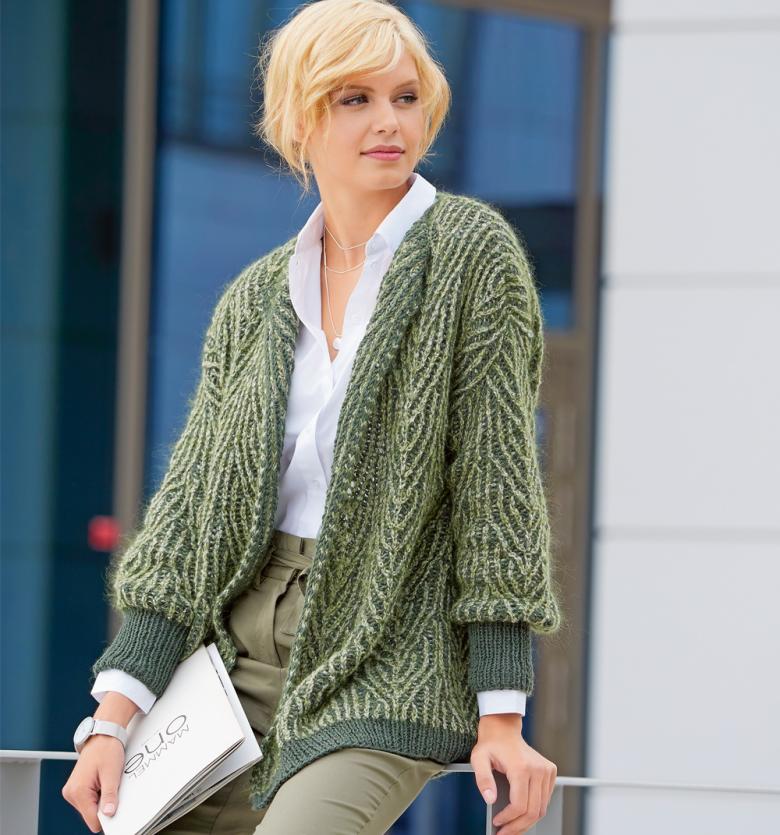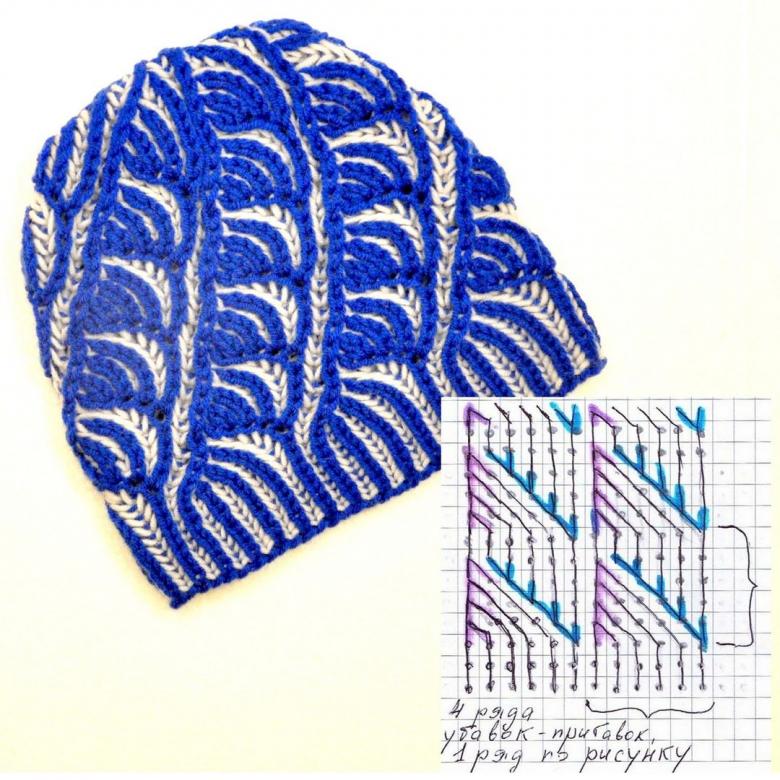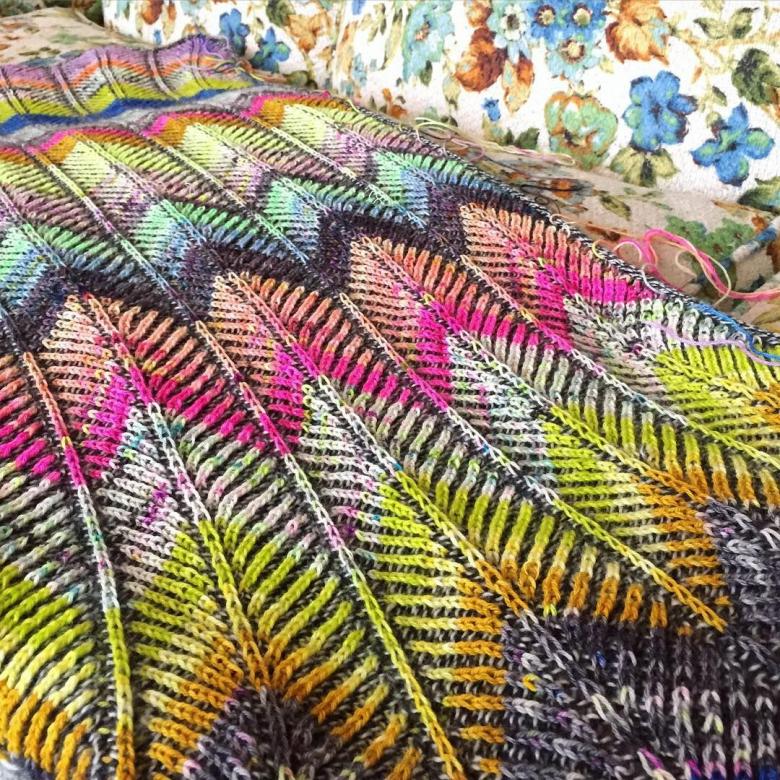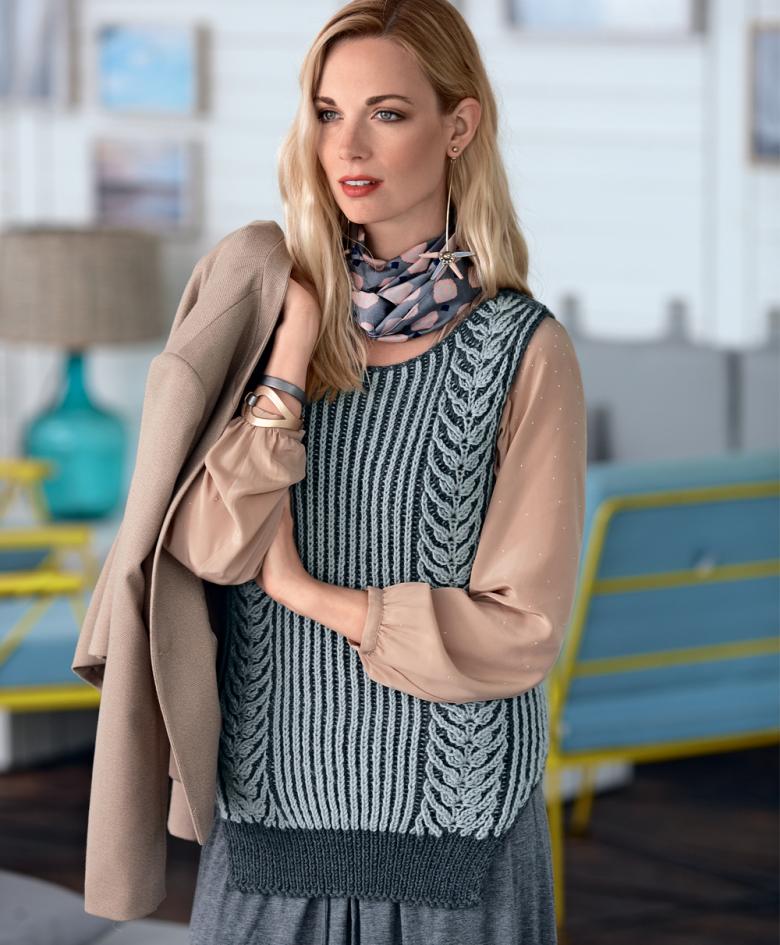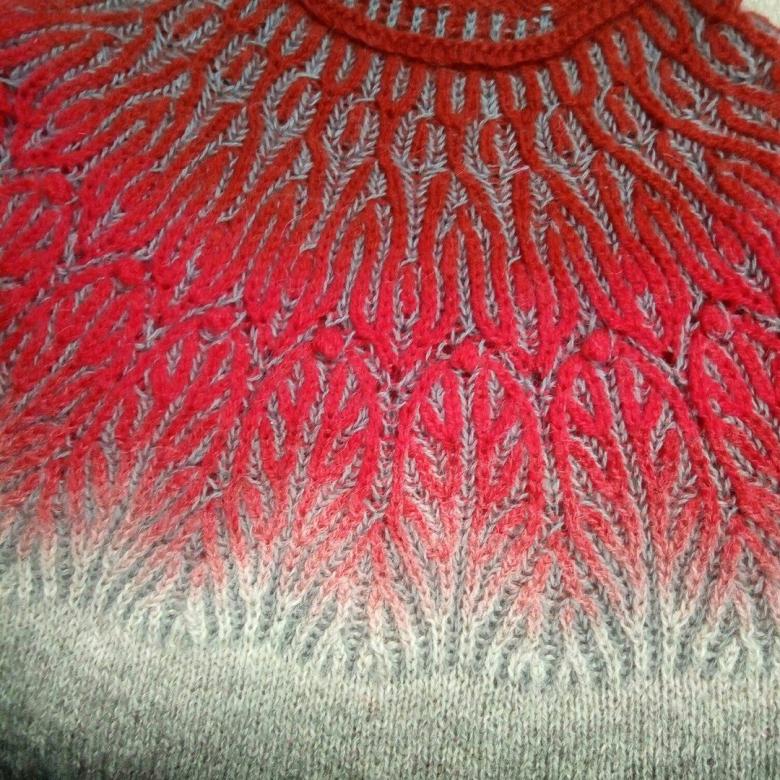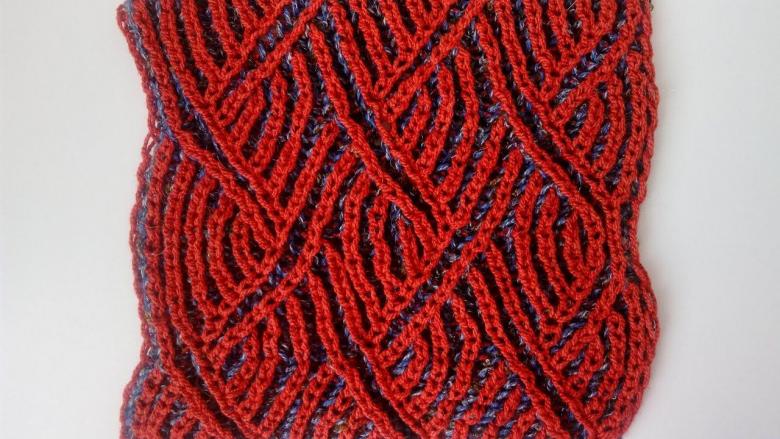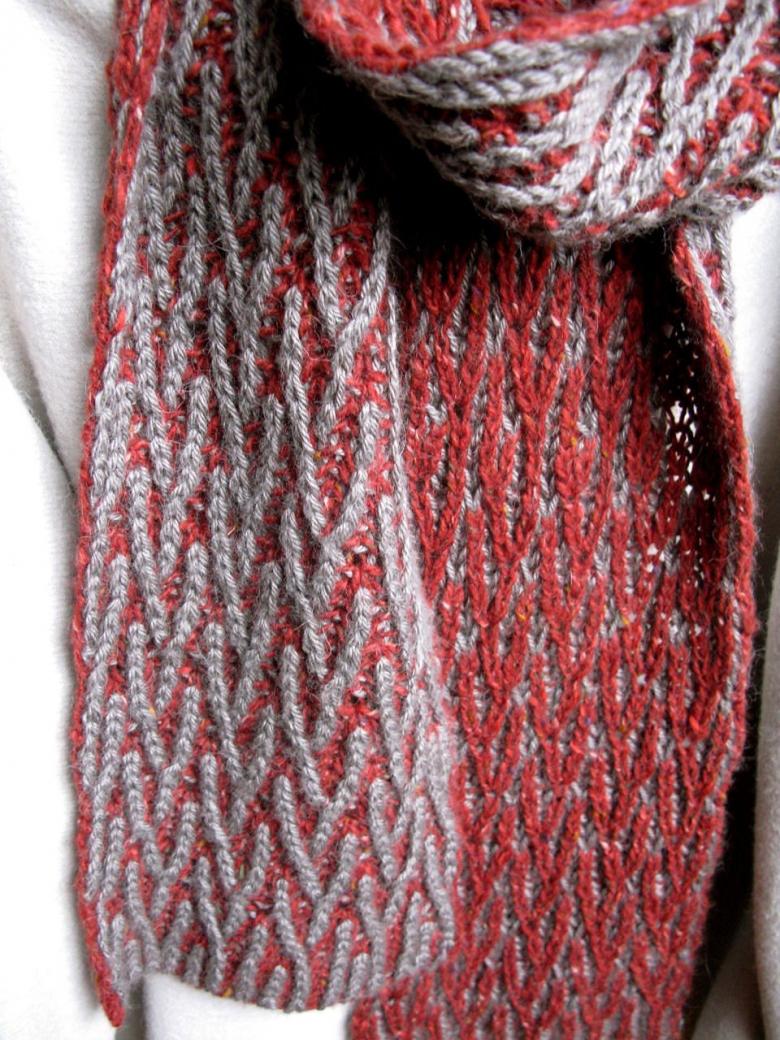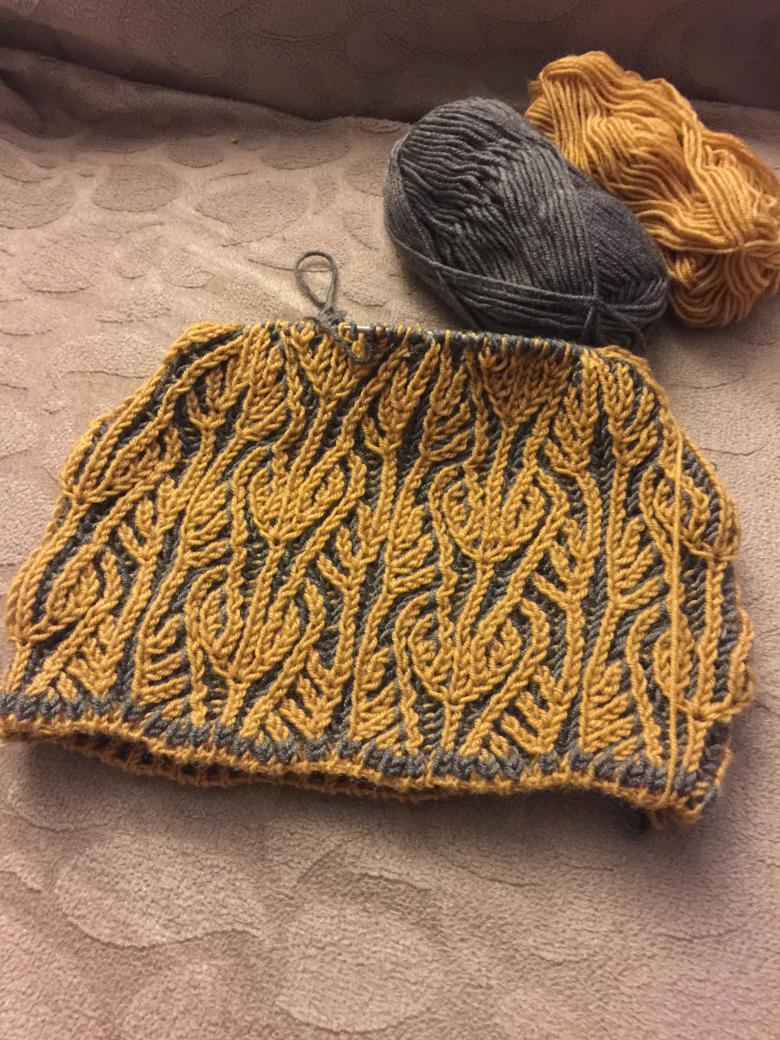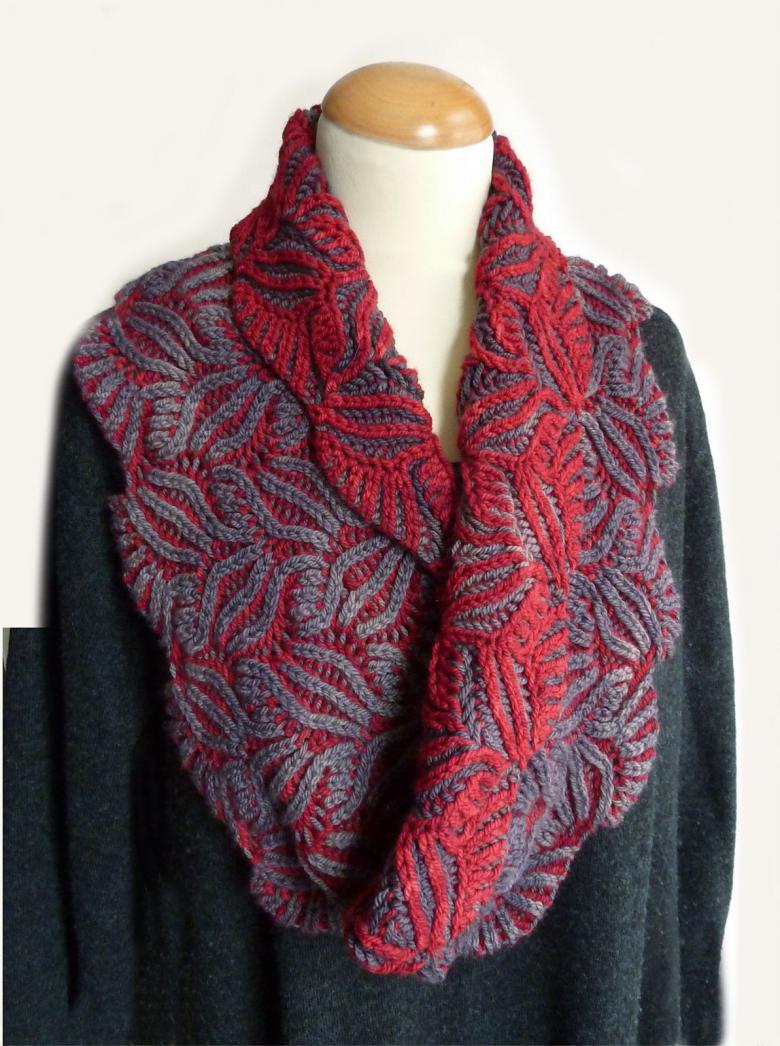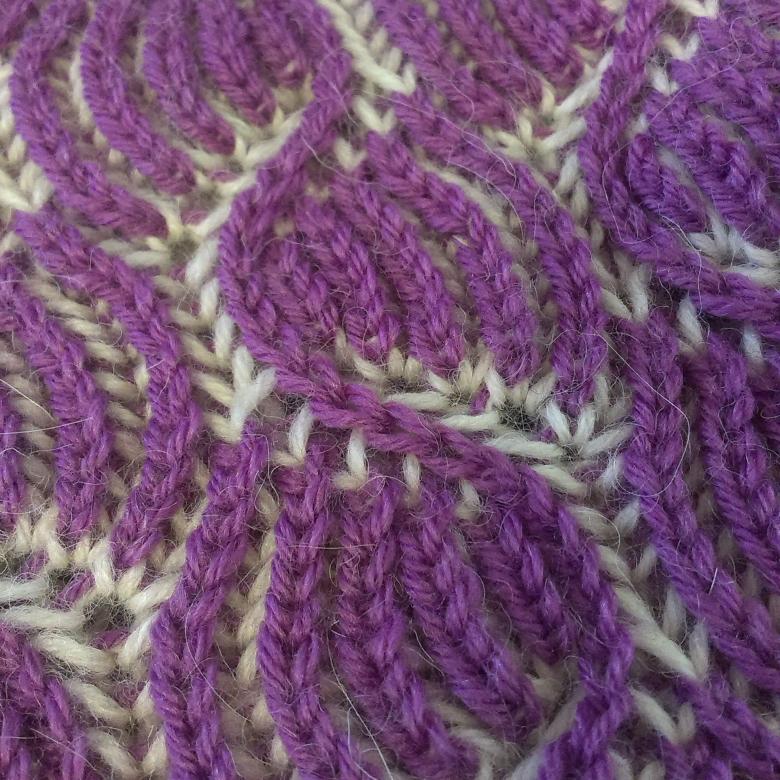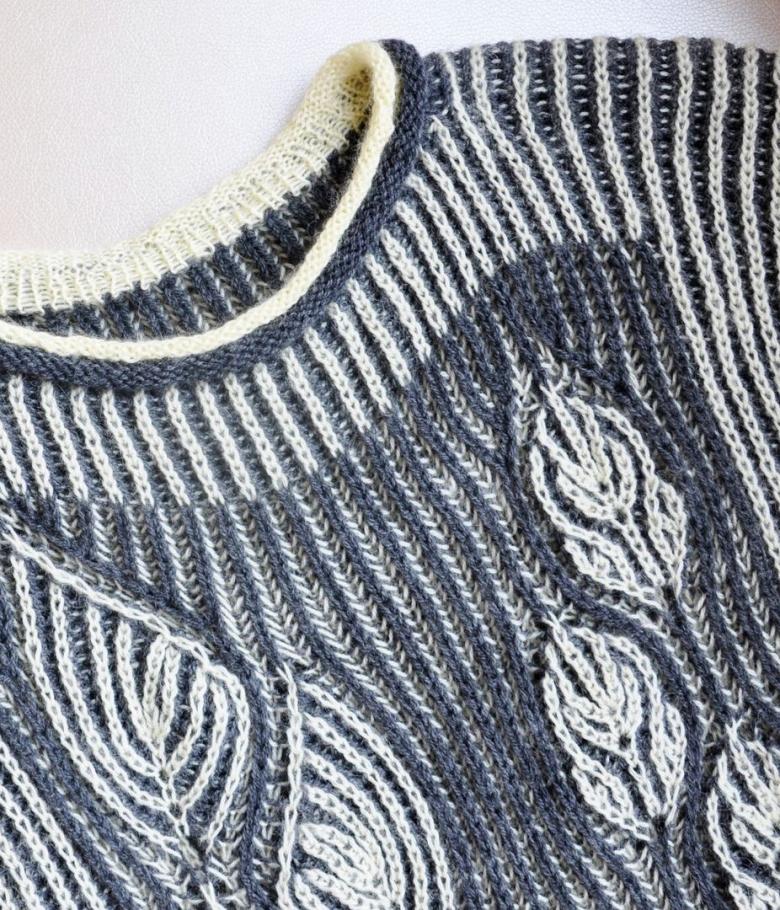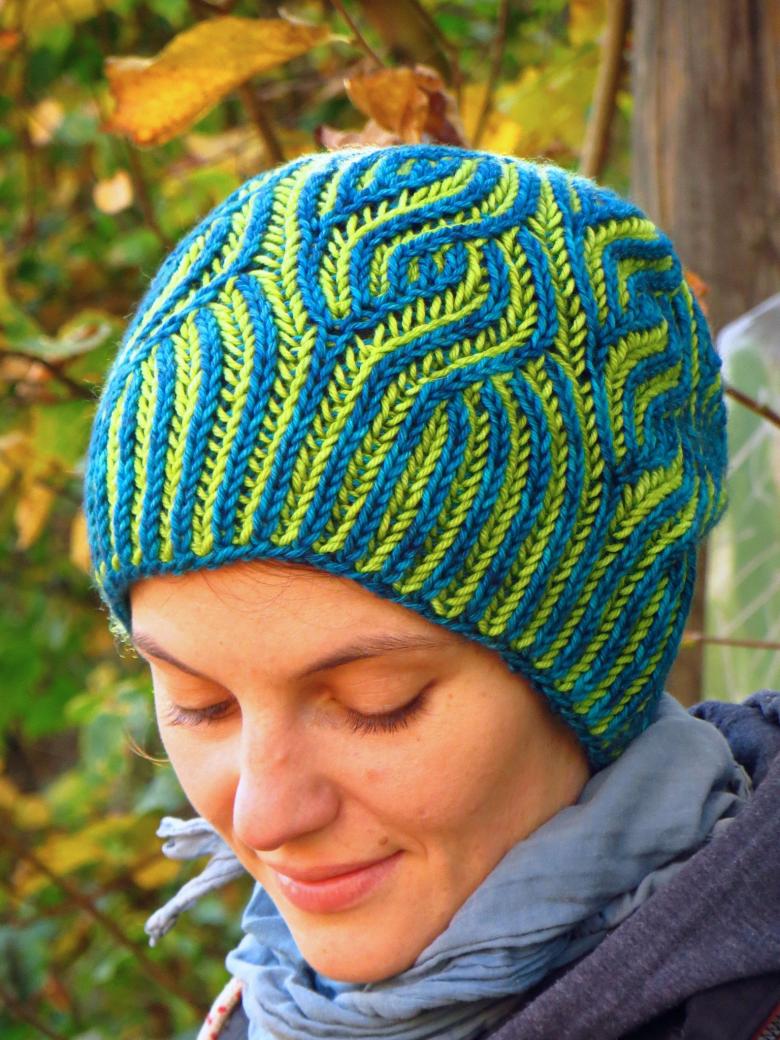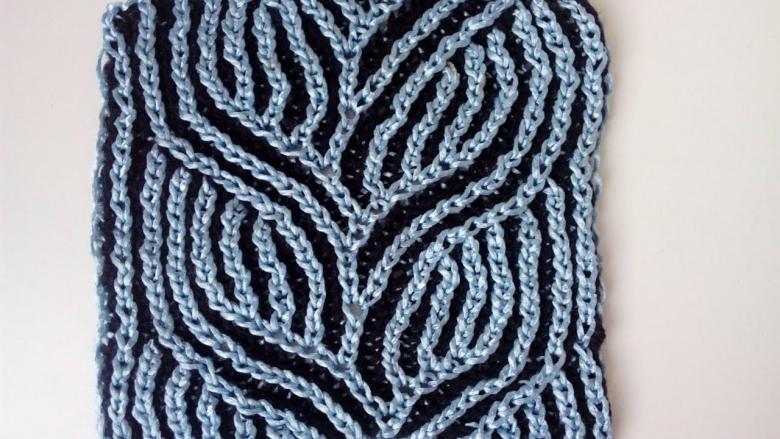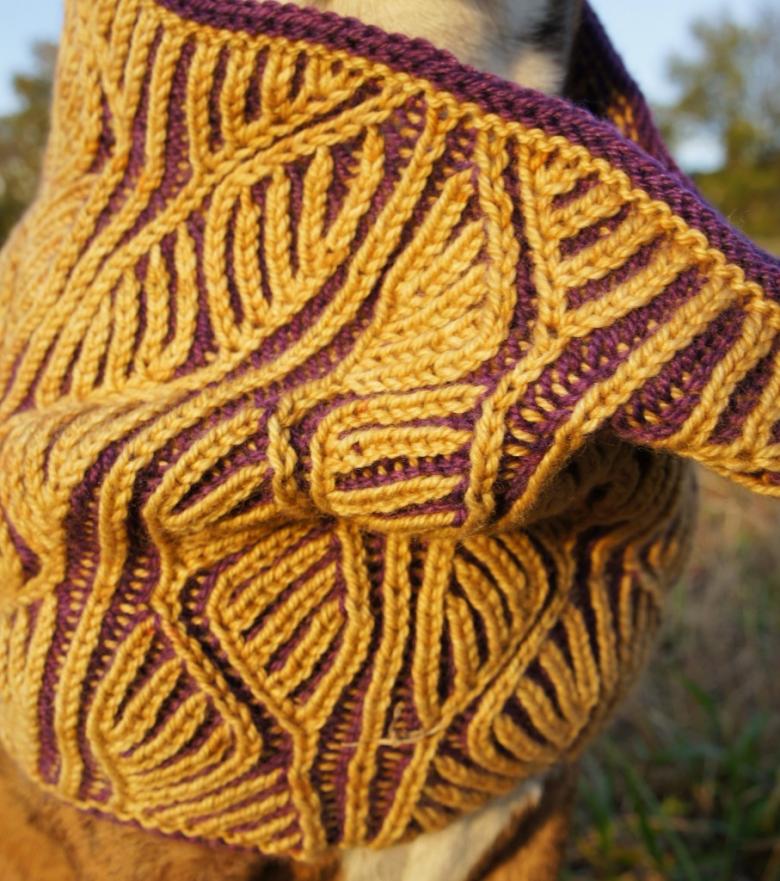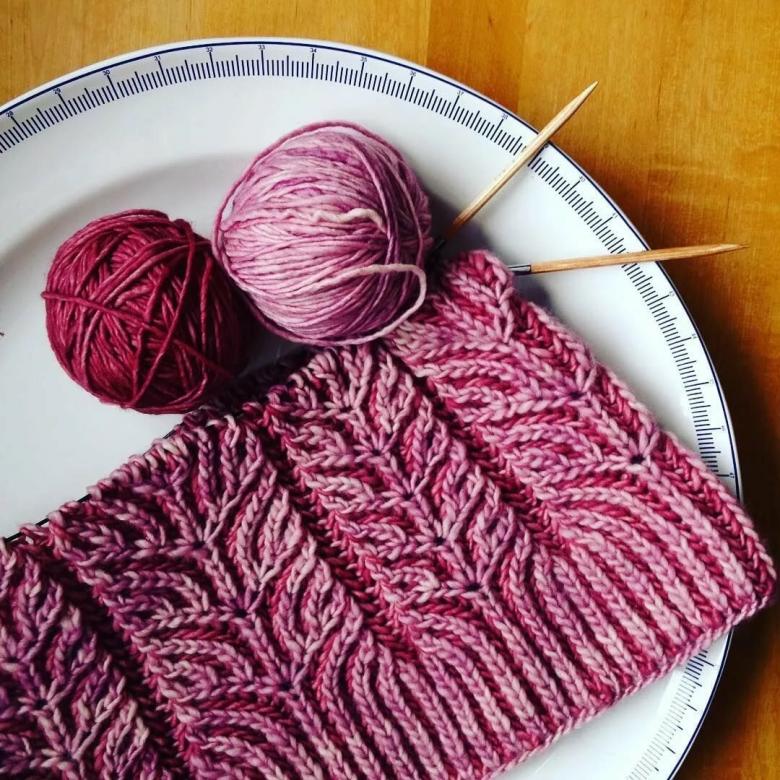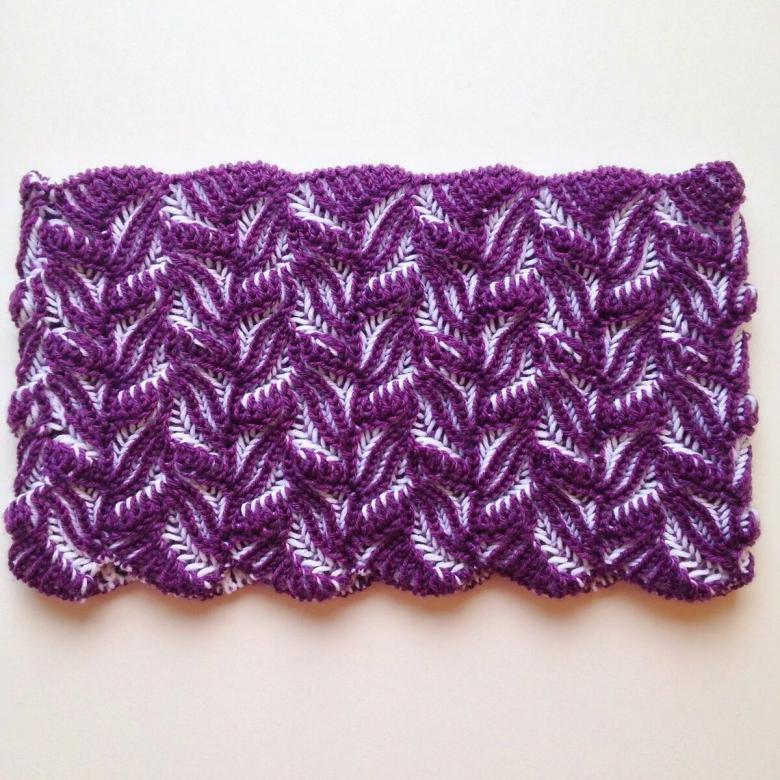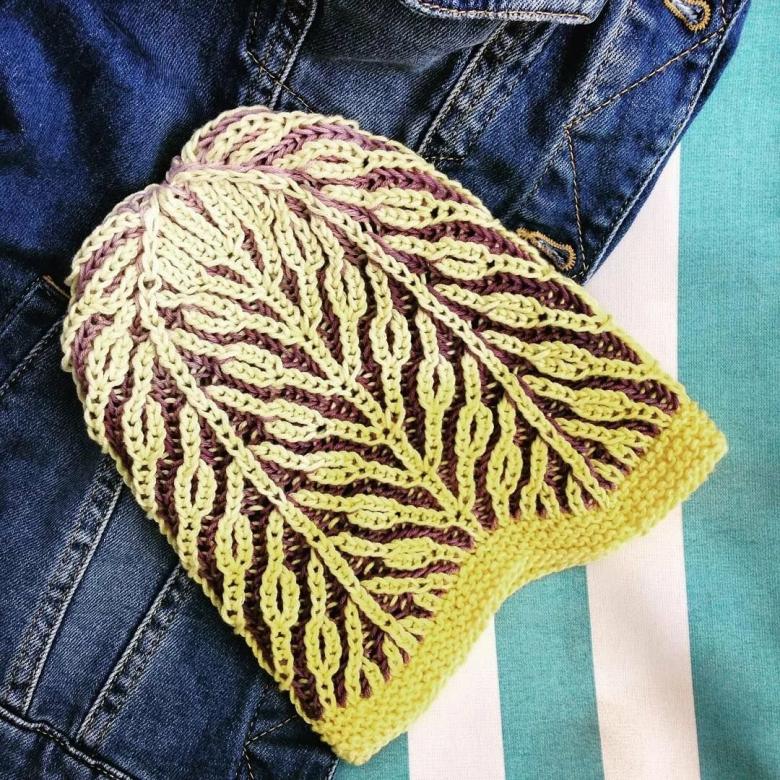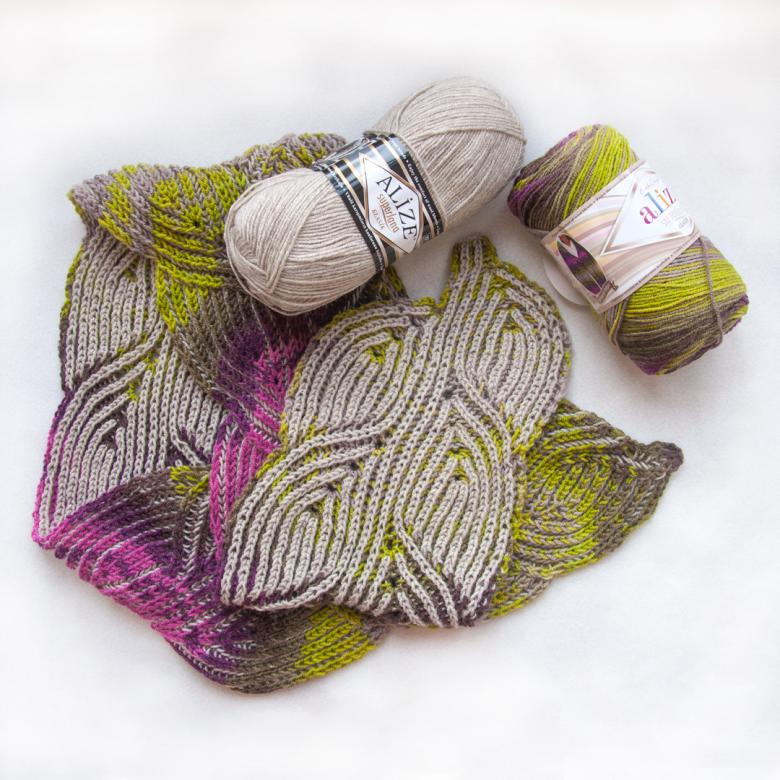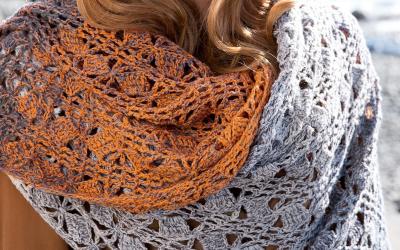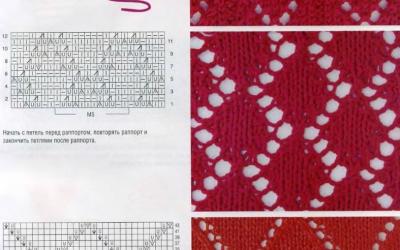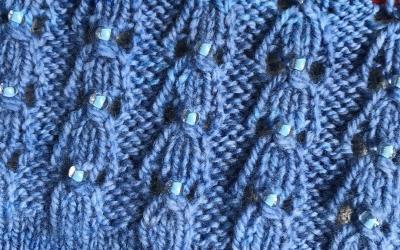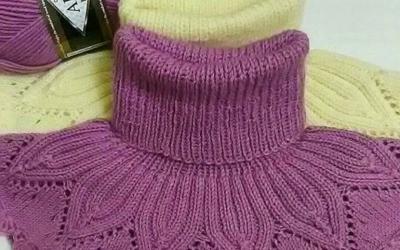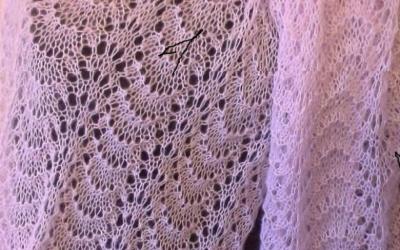Knitting brioche with needlepoint: how to sew original patterns and embellishments
Quite a large number of needlewomen and knitting fanatics have heard about the legendary technique of knitting "brioche". Beauty, harmony, simplicity and brightness of images are successfully intertwined in one technique. Today we shall not only discuss basics of "brioche" knitting technique but show it on examples of knitting by schemes.
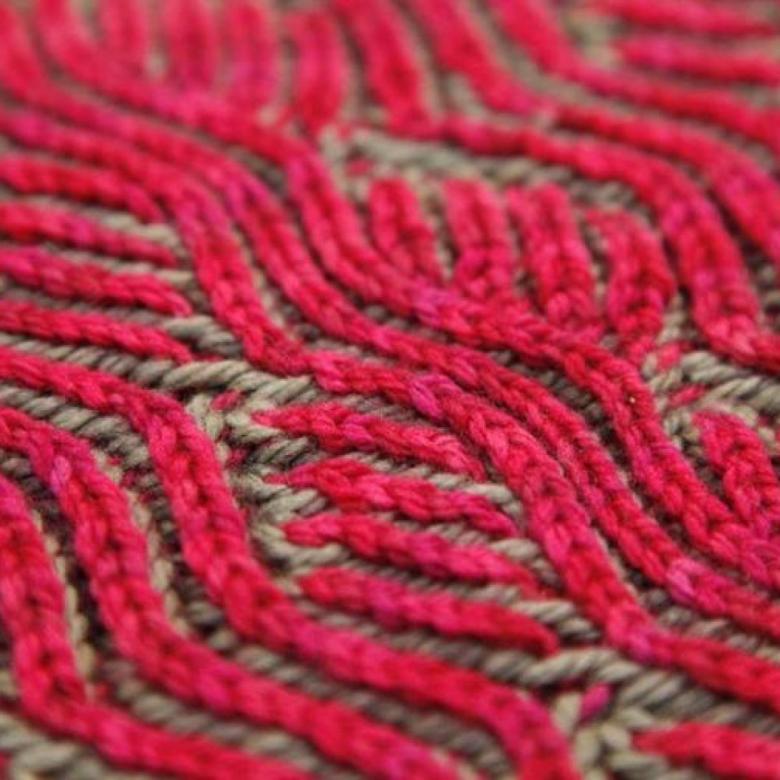
Key features of knitting
Brioche came from the popular name abroad brioche knitting. It looks quite spectacular, and the technique allows you to combine a huge number of ideas into an incredible interweaving of patterns. Harmonious straight strips, braided braids, special patterns - all this is not the limit of brioche technique.
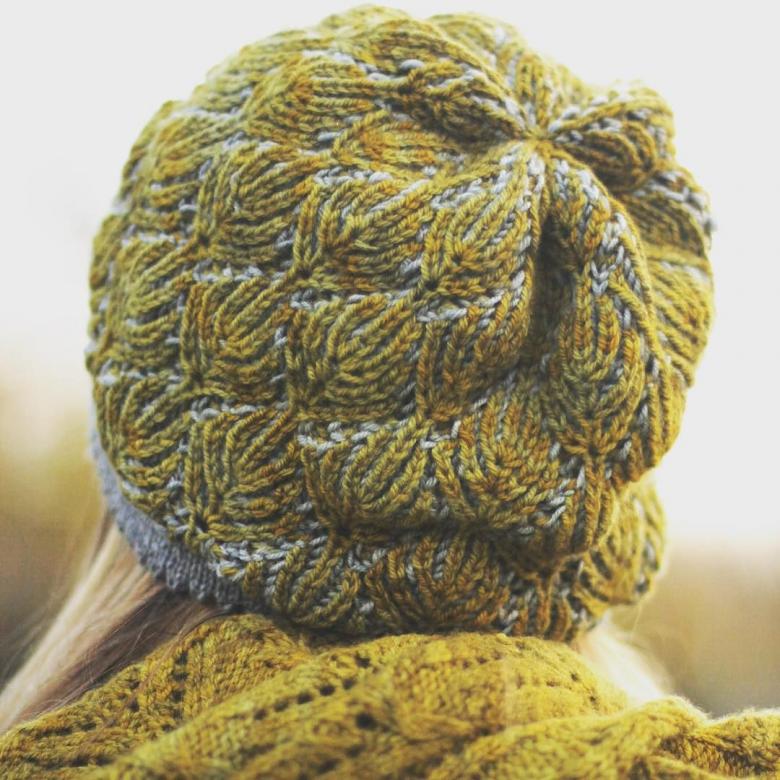
With the technique of brioche knitting knitting is not difficult to understand, the schemes and description will be below, so that even in the first stages you can become familiar with the technique of knitting and even learn how to create your own schemes. All you need to know are the basic techniques and color combinations that brioche stands for.

A distinctive feature of the technique is the proper alternation. The basic weave of the knit is quite dense and two-layered. The brioche pattern itself resembles an accordion, an arch or a fish scale.
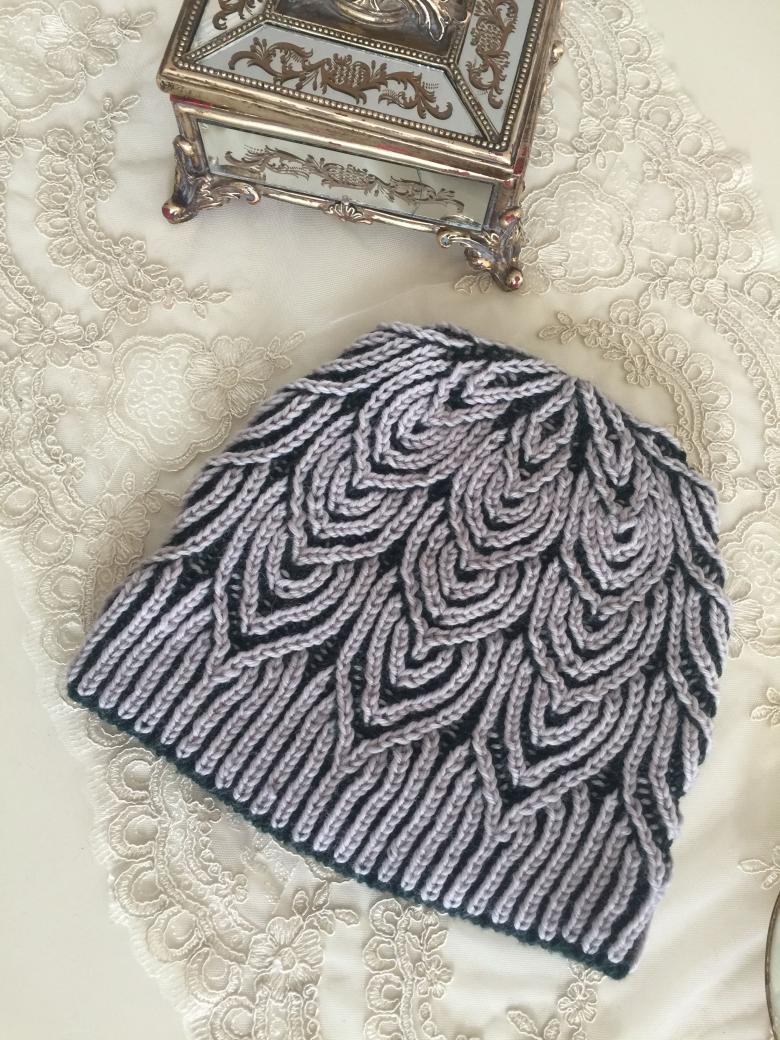
By its peculiarity, brioche thickens the doubling due to the lowered threads, which makes the fabric itself more dense. The interesting thing is that such a canvas is great for almost any kind of product, which makes the knitting technique versatile for any occasion.
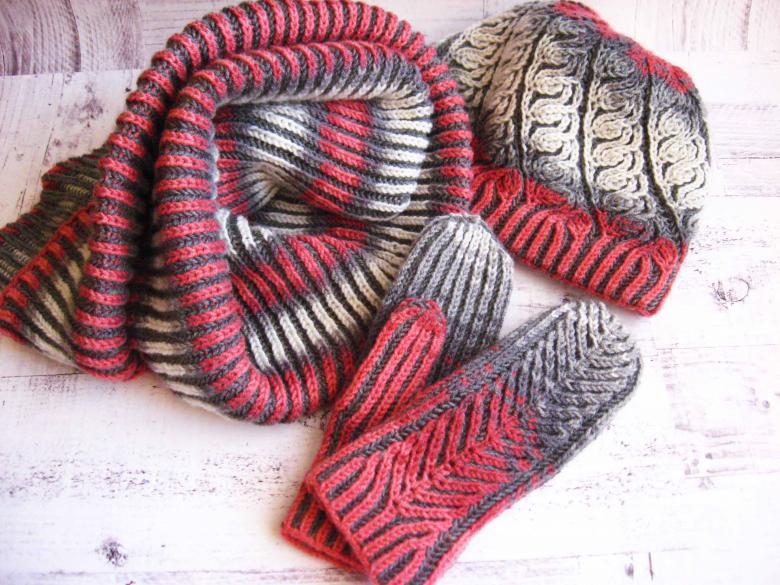
Main features:
Take into account the fact that the base of the canvas due to the doubling will be twice as wide when stretched, which is why brioche technique products do not like aggressive wear and tear.

What is better to make with brioche technique?
- Socks.
- Gaiters.
- Scarves.
- Tubes.
- Berets.
- Skirts.
- Minnie.
- Uggs.
- Mittens.
- Dresses.
- Hats.
- And other similar products.
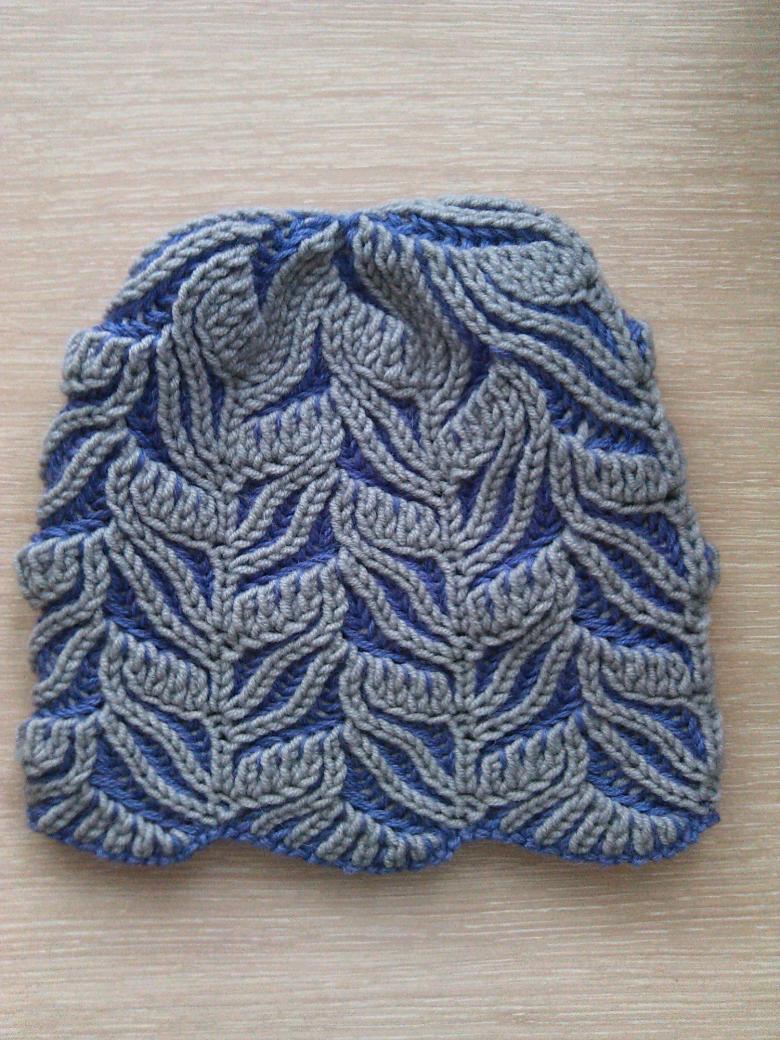
It is not recommended to make plaids and warm blankets, as they will simply lose their shape after a couple of washings. However, quite often needlewomen make capes and bedspreads in this technique, which are less aggressively worn, and therefore - better hold their shape.

What do you need for knitting?
- Any yarn will do, except woolen yarn.
- Use needles #3-4.

Step by step technique.
The basis is a patent elastic band. This base looks exactly the same on the front and back. This technique is also called English brioche.
Step 1. Gather an odd number of stitches.
Step 2. Dial in the knitting combination: 1 selvedge, as usual. 1 front, 1 skip (taken off), flip to the second needle.
Step 3. Repeat the combination to the end of the row, but, the final loop must always be a right stitch.

IMPORTANT: The entire row must look the same. If there are any differences, the row is not correct and it will spoil the pattern.
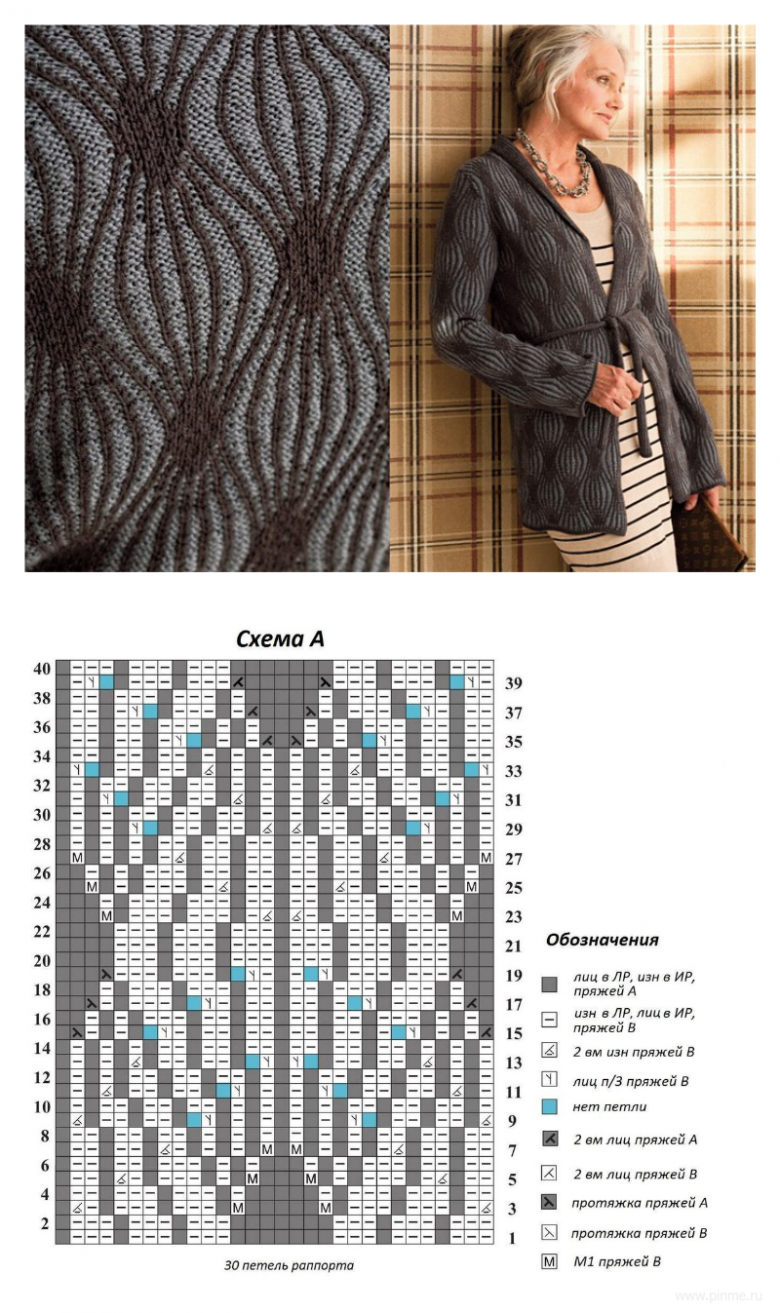
To make a cape, you must throw the working thread over the needle without any twists.

The second wrong side should be removed on the right side and then with the already thrown with the cape grabbing the front holding the bottom of the row (two threads) and then repeat until the end of the row.
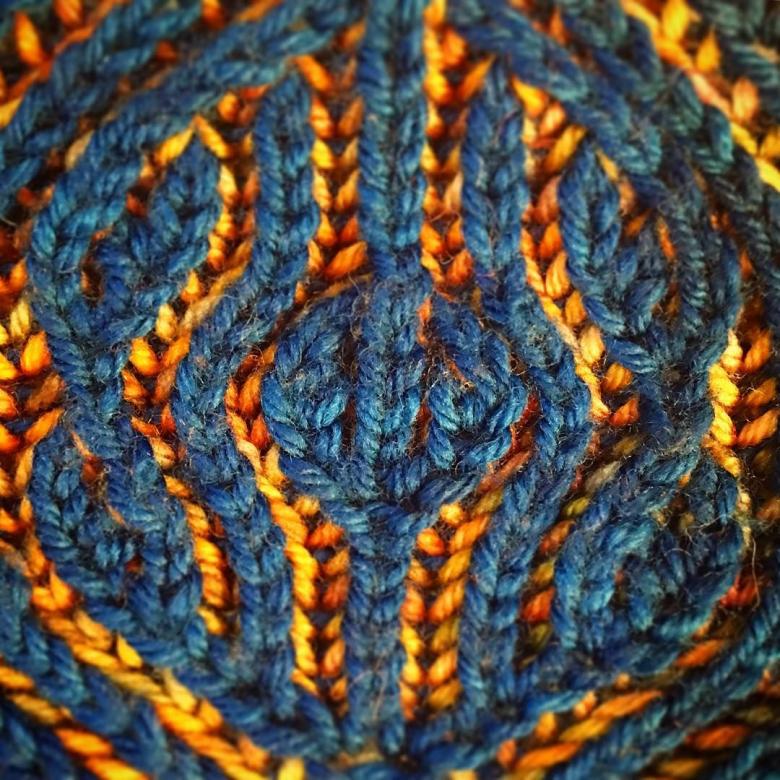
IMPORTANT: Pay attention to the fact that the loop with the cape must always be as the right side, otherwise the pattern will be wrong.

Technique and schemes
Brioche knitting technique description in Russian is available completely free for consultation below. Remember, you can always make your own patterns when you learn simple basic patterns. The main thing is to understand the essence of brioche and you can safely make your own blanks.
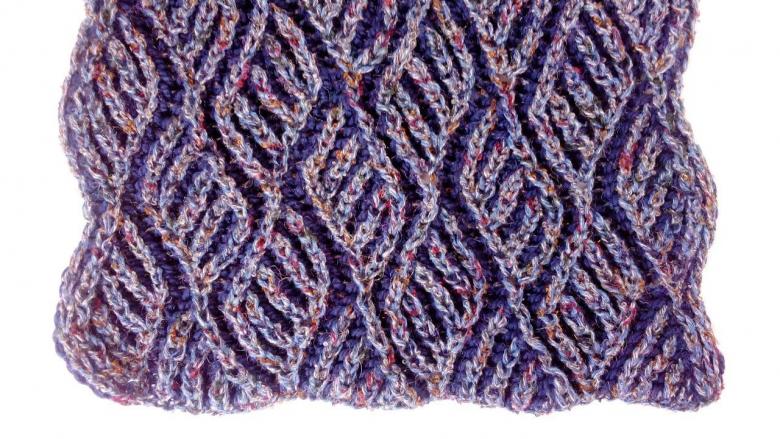
Brioche circular knitting techniques
Here it is important to choose circular needles. As pointed out by needleworkers, it is simply uncomfortable and difficult to cope with others, however, if you are used to it, you can try it that way.

Circular needles are needed to ensure that the model and the scheme is not twisted and as a result the pattern was correct. Otherwise, the principle remains the same. Tight row, double weave.
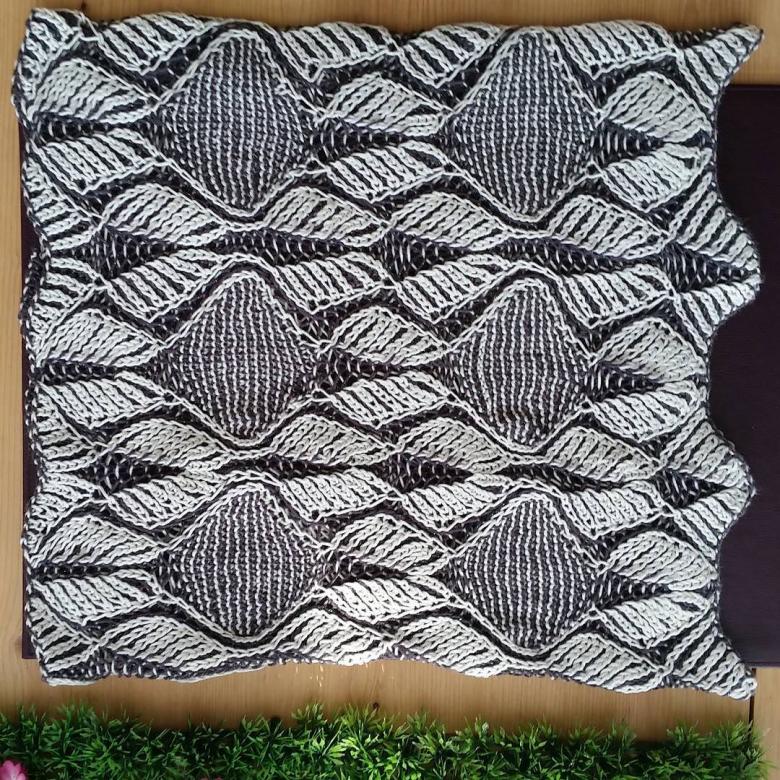
The following is a variation of the pattern.
No. of the list and the row
- L - Frontal.
- CH - A - The knit stitch.
- I - Blown from a loop with a cape.
- LP - Single and knit from a mantle stitch.
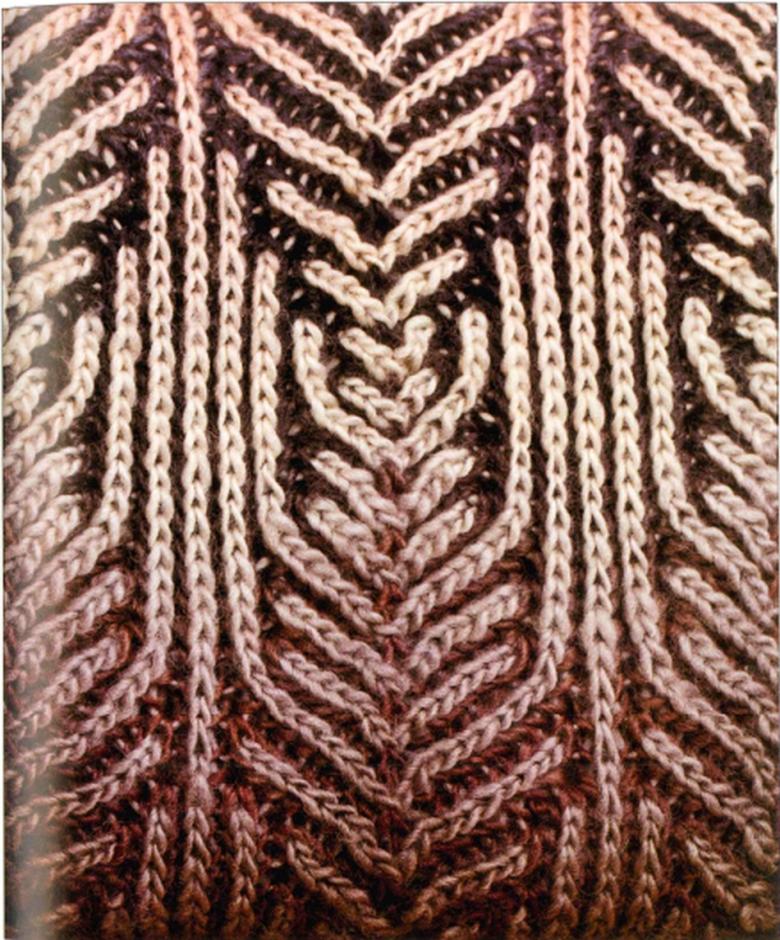
Step 1
Dial in the desired number of loops by the odd number.
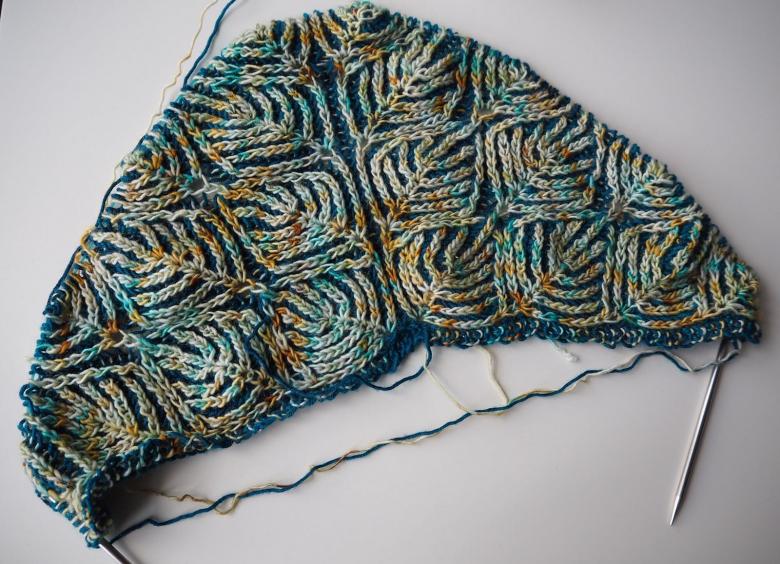
Note that the loops of one color must be a multiple of two, and add one more loop after the bow.
- Color 1 - L, CH
- Color 2 - CH, I
- Color 1 - LP, CH

Step 2.
In order to finish the fabric of our piece all the way to the end, continue to alternate 2 and 3.
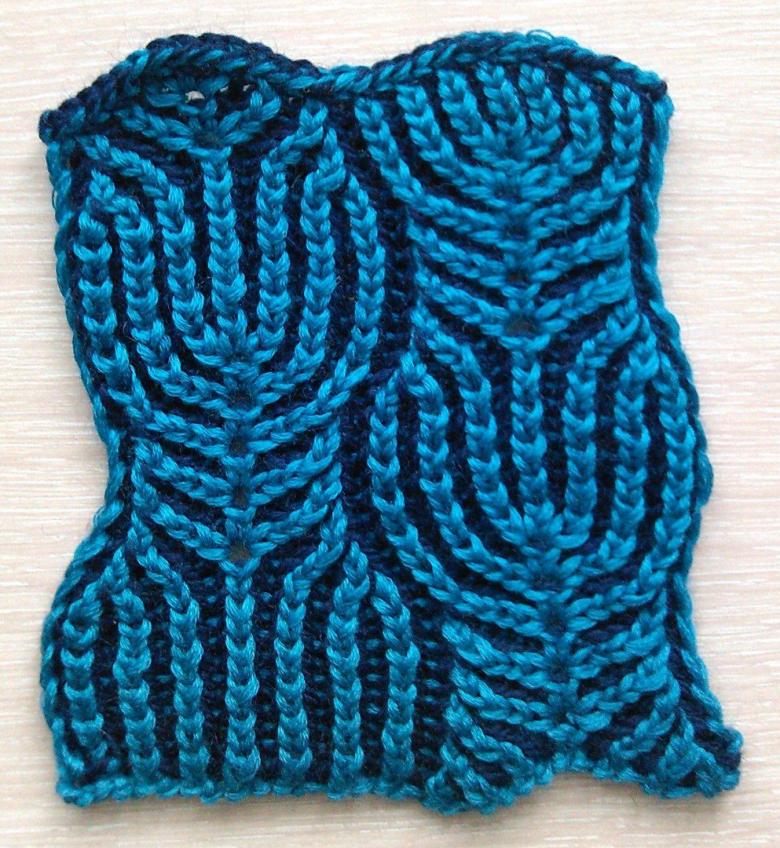
Two-color English brioche
This kind of brioche weaving and knitting technique is used to create things with a sporty theme. The fabric of the product, as inherent in the technique of brioche - will be the same on both sides (face and back).
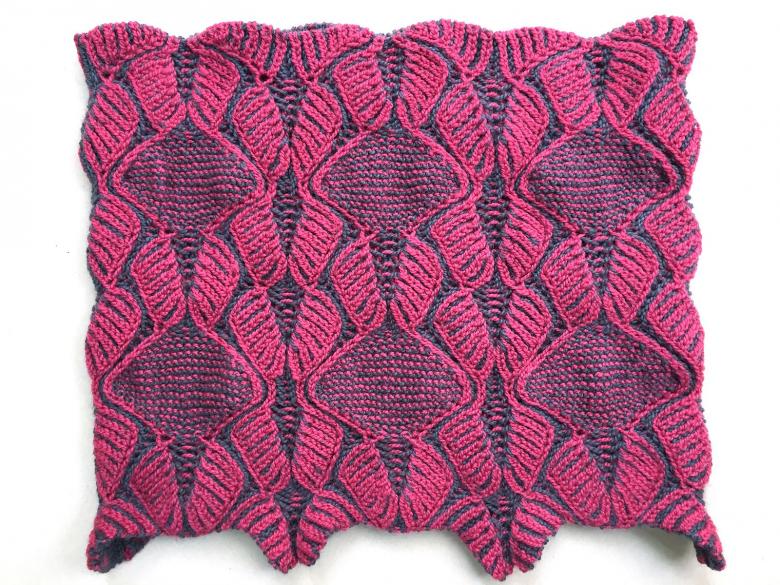
Consider the scheme:
Dial the desired number of loops, which will be a multiple of 3-th, add to this number 2 edge loops.
- BOS - flip to the right side of the needle.
- BOS - selvedge.
- LP - front stitch.
- H - mantle.
- SNP - yarn goes behind.
- IP - the wrong stitch.
- Let's take on a yarn color 1

Scheme of weaving a point-row:
- Take off CRP.
- Add 1 BH.
- Make H.
- Remove the loop.
- Next repeat LP, H, SNP.
- At the end of the knitting do CRP.
- Next CPR all perform in the same way.
- CKP, H, STU, IP, then repeat H, STU, IP.
- At the end of the weaving, add a new thread of a different color to the PSC.
- Continue with the two threads together.
- Bring color 1 out in front of the blank.
- Bring the second color out to the back.
- KRP, N, SNP, PPN, LP.
- Repeat H, SNP, LP.
- IMPORTANT: the entire row run color 2.
- AES, IP, H, BOS - all performed in color 2.
- CROP, LP, H, SNP - we do the weight of the color 1, then repeat LP, H, SNP by the number of rows.

Scarf brioche technique
Brioche knitting technique - how to knit a beginner fashionably and beautifully? The weight is quite simple, although training can sometimes be grueling, and it's not even about the set of loops, but the dissolution of the product.
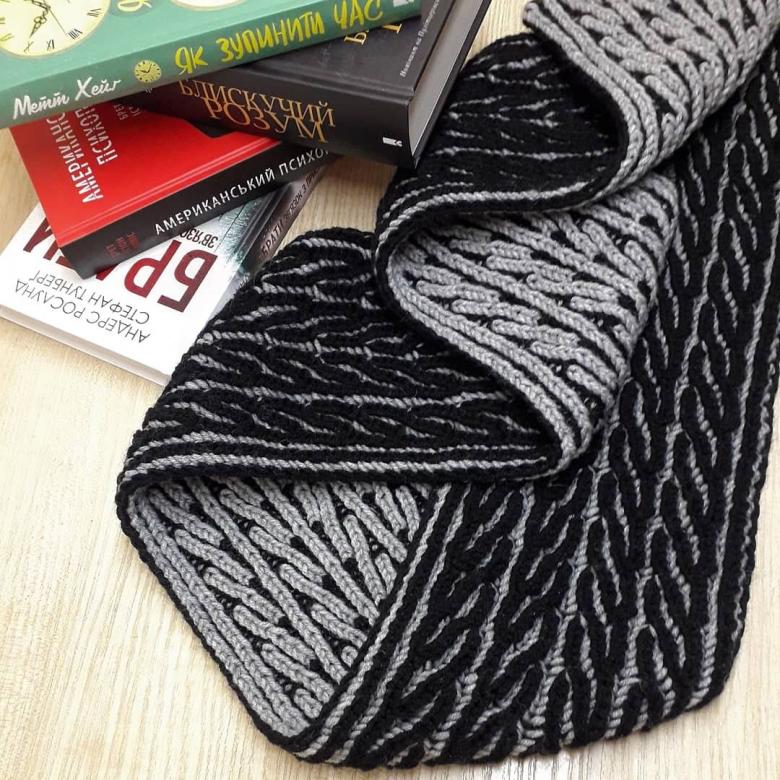
The brioche itself is very costly to dissolve, that sometimes the thread descent takes a huge amount of time even on the shortest product. It's all about the tight knitting, however, for you, we've picked up a simple scarf pattern that even beginners will understand.
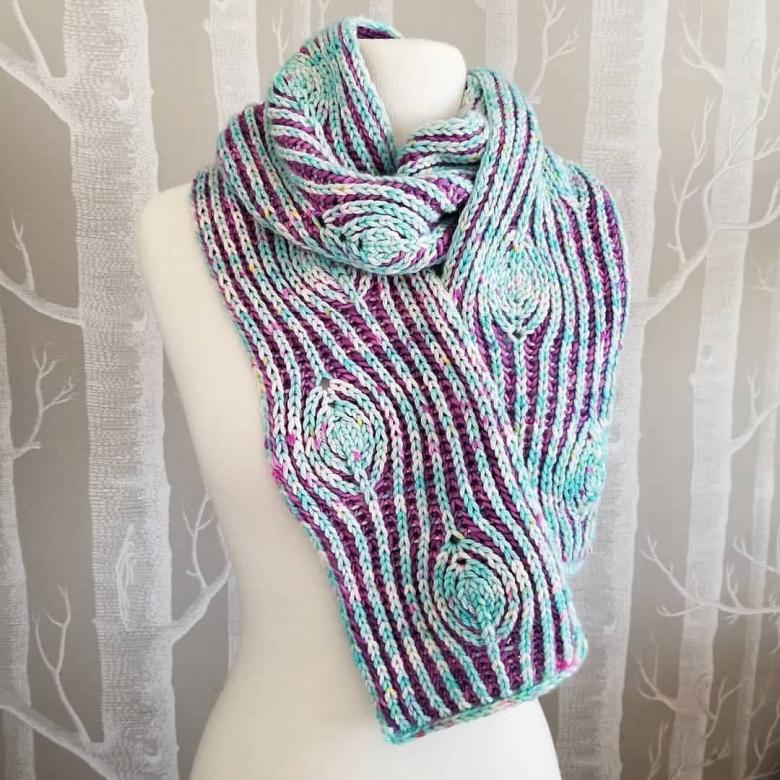
Step 1
- Dial 39 stitches.
- We make a classic English brioche.
- Take off the K, then the P with a stitch, the front. Repeat P and LP. The last P is taken off and the K is added to the back of the LP.
- After that, shift the whole pattern and knit again, thanks to this movement we will get two rows in the same direction with two yarns on one side.
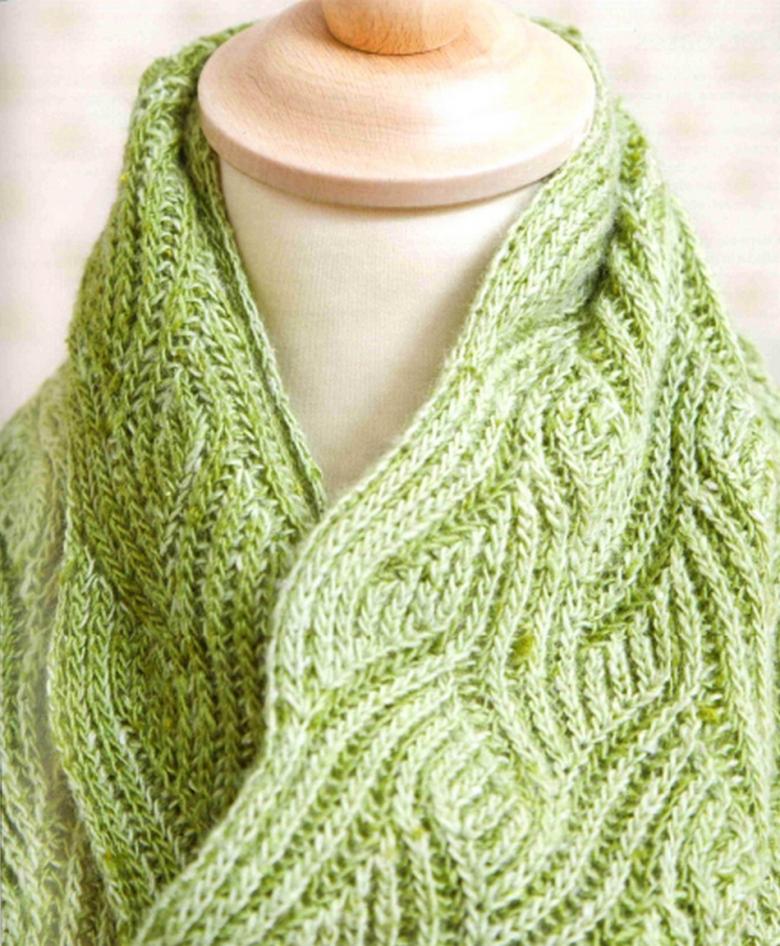
Step 2
- Having shifted the loops of the model we make the pattern with another color.
- The first color take off K, then P with a cape, and we do on the wrong side with the P color of the main row.
- After that, we do the LP with a stitch.
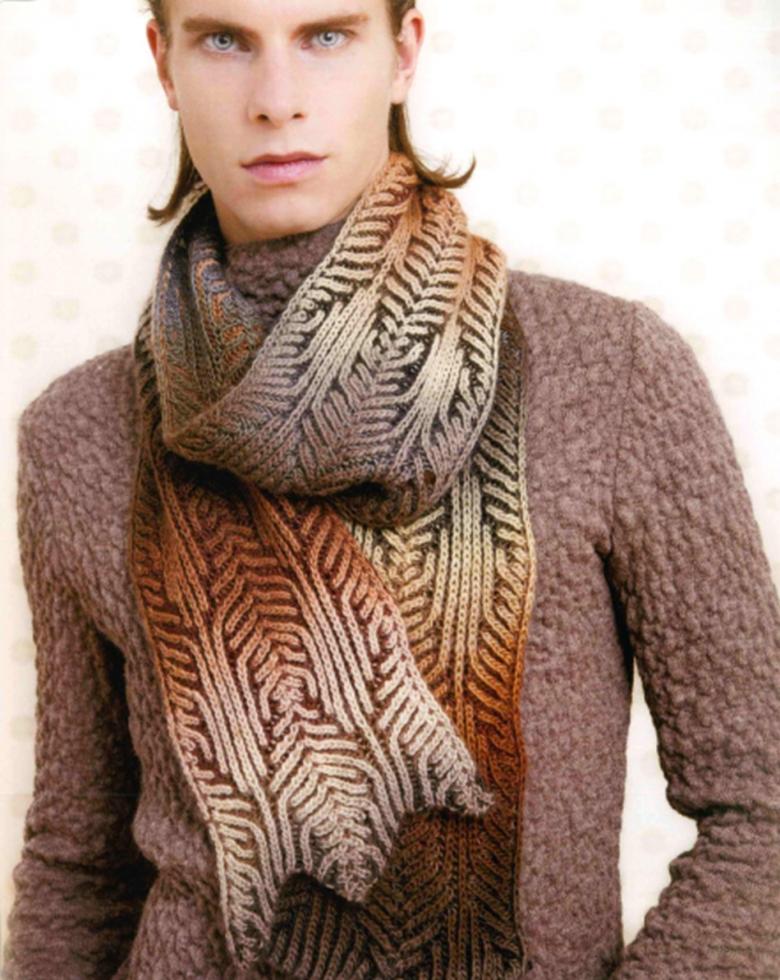
Step 3
The whole process is repeated by alternating back and forth loops from the previous row with an LP and a cast-on from the main row. The final K is simply removed. For a more detailed breakdown, this knitting technique is also called the Italian set of loops.
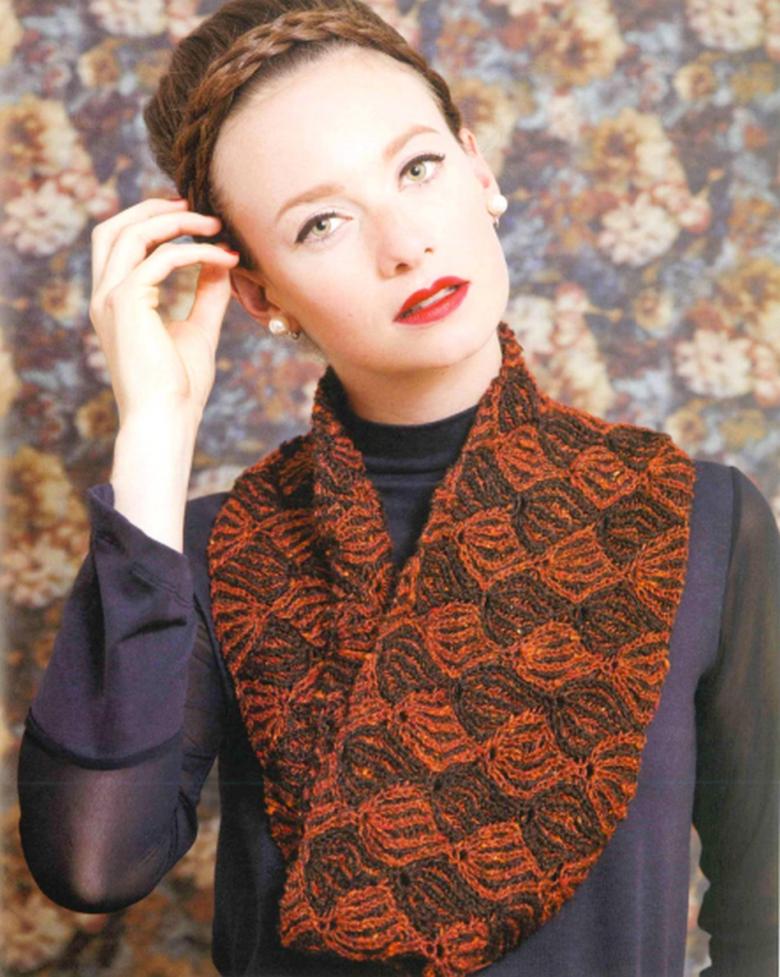
In more detail, you can get acquainted with the step-by-step scheme, which shows the instructions with a set and a cape of multicolored yarns.
Photo ideas and diagrams of knitting brioche with knitting needles


